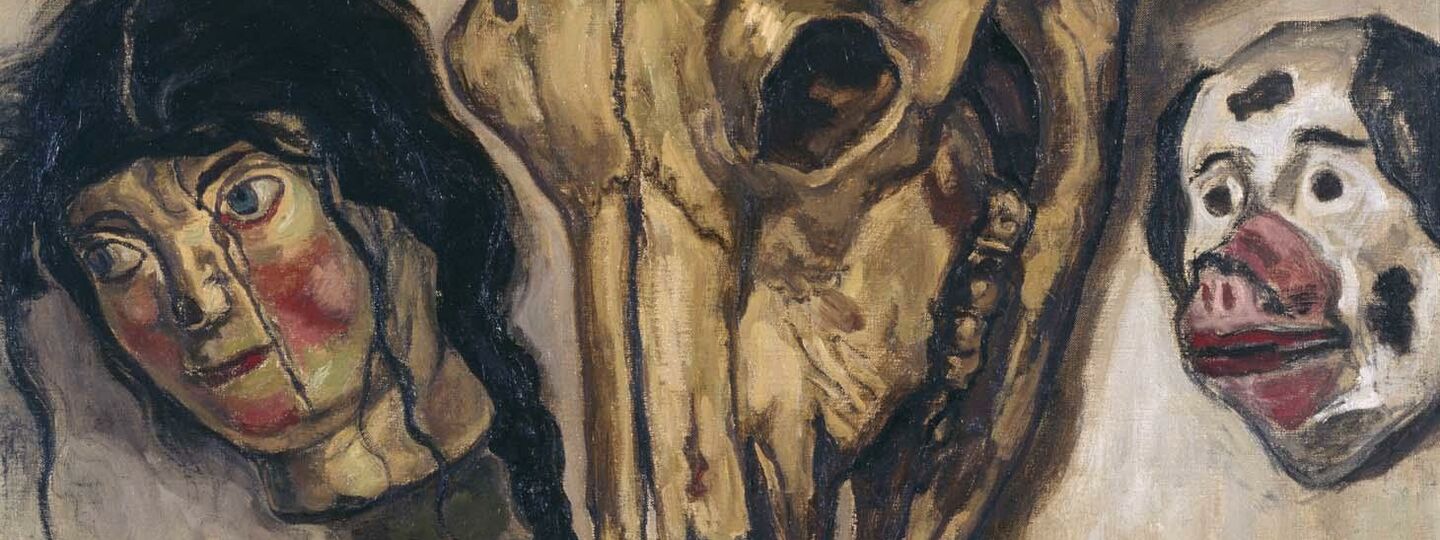
Info
Teste e maschere
José Gutiérrez-Solana
1943
Museo Nacional Centro de Arte Reina Sofía
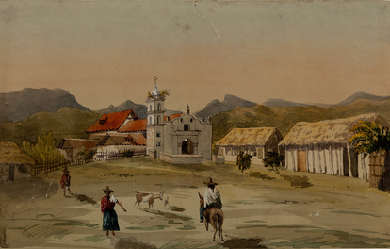
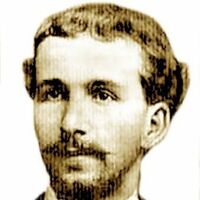
José Asunción Silva (Bogotá, 1865 - 1896) Poeta colombiano. En la historiografía literaria suele reconocérsele como el gran iniciador del modernismo en Hispanoamérica, que el nicaragüense Rubén Darío llevaría a la cúspide. Dotado de una gran sensibilidad humana y artística y de una notable inteligencia, tuvo una formación literaria precoz, resultado de un ambiente familiar cultivado y creativo. Se suicidó a sus 30 años dándose un tiro en el corazón con un revólver Smith & Wesson, y se cuenta que se encontró el libro El Triunfo de la muerte de Gabriele D'Annunzio, a la cabecera de su lecho. Su suicidio se debió a su escasez de dinero, entre otras variadas causas detalladas por expertos y conocidos suyos y del medio social bogotano de la época.
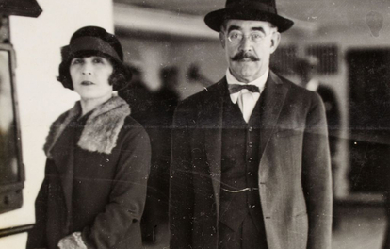
Leopoldo Lugones fue un poeta, ensayista, periodista y político argentino. Nació el 13 de junio de 1874 en la localidad de Villa María del Río Seco ubicada en el norte de la provincia de Córdoba, como el primer hijo de Santiago M. Lugones y Custodia Argüello. Decepcionado, precisamente, por las circunstancias políticas de la década de 1930 y quizás por su propia militancia, se suicida el 18 de febrero de 1938 en un hotel de Tigre, Buenos Aires, (llamado "El Tropezón") al ingerir una mezcla de cianuro y whisky.
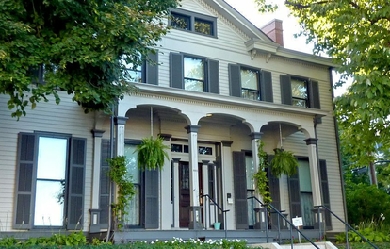
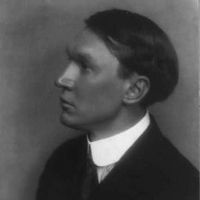
Nicholas Vachel Lindsay (November 10, 1879– December 5, 1931) was an American poet. He is considered a founder of modern singing poetry, as he referred to it, in which verses are meant to be sung or chanted. Crushed by financial worry and in failing health from his six-month road trip, Lindsay sank into depression. While in New York in 1905 Lindsay turned to poetry in earnest. He tried to sell his poems on the streets. Self-printing his poems, he began to barter a pamphlet titled “Rhymes To Be Traded For Bread”, which he traded for food as a self-perceived modern version of a medieval troubadour. On December 5, 1931, he committed suicide by drinking a bottle of Lysol. His last words were: “They tried to get me; I got them first!”
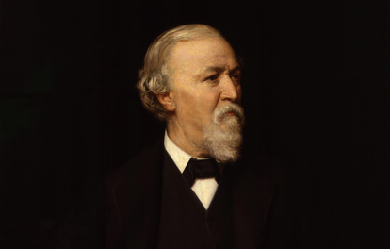
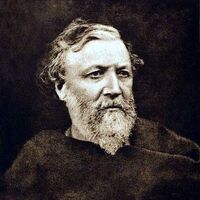
Robert Browning was born on May 7, 1812, in Camberwell, England. His mother was an accomplished pianist and a devout evangelical Christian. His father, who worked as a bank clerk, was also an artist, scholar, antiquarian, and collector of books and pictures. His rare book collection of more than 6,000 volumes included works in Greek, Hebrew, Latin, French, Italian, and Spanish. Much of Browning's education came from his well-read father. It is believed that he was already proficient at reading and writing by the age of five. A bright and anxious student, Browning learned Latin, Greek, and French by the time he was fourteen. From fourteen to sixteen he was educated at home, attended to by various tutors in music, drawing, dancing, and horsemanship.

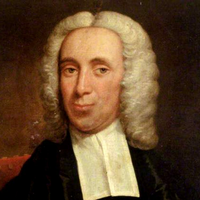
Isaac Watts (17 July 1674– 25 November 1748) was an English Christian minister, hymnwriter, theologian and logician. A prolific and popular hymn writer, his work was part of evangelization. He was recognized as the “Father of English Hymnody”, credited with some 750 hymns. Many of his hymns remain in use today and have been translated into numerous languages.
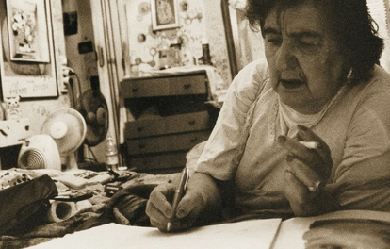
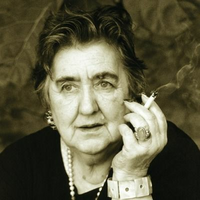
Alda Giuseppina Angela Merini (Milano, 21 marzo 1931 – Milano, 1º novembre 2009) è stata una poetessa, aforista e scrittrice italiana. «Ho la sensazione di durare troppo, di non riuscire a spegnermi: come tutti i vecchi le mie radici stentano a mollare la terra. Ma del resto dico spesso a tutti che quella croce senza giustizia che è stato il mio manicomio non ha fatto che rivelarmi la grande potenza della vita.»

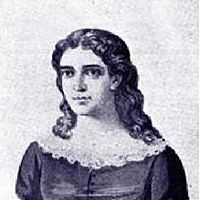
Dolores Veintimilla de Galindo (Quito, 12 de julio de 1829 - Cuenca, 23 de mayo de 1857) fue una poeta ecuatoriana del siglo XIX. Durante su corta vida fue la creadora de poemas de corte romántico que están cargados de elementos que asocian a la mujer con el papel de víctima asociados con sentimientos de dolor, tristeza, anhelo del pasado, amores frustrado y pesimismo. Fue influenciada por la formación de la subjetividad femenina de su época. Su poema “Quejas” está lleno de esos sentimientos que reflejan su estado anímico. El fracaso en su matrimonio con el médico colombiano Sixto Galindo, así como su pensamiento feminista adelantado a la época, marcarían la personalidad y los trabajos posteriores de Dolores. La persecución e incomprensión de la sociedad cuencana la llevó al suicidio.

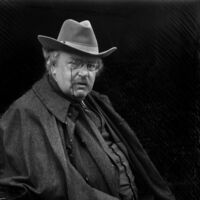
Gilbert Keith Chesterton (29 May 1874 – 14 June 1936) was an English writer, philosopher, Christian apologist, and literary and art critic. He has been referred to as the "prince of paradox". Of his writing style, Time observed: "Whenever possible Chesterton made his points with popular sayings, proverbs, allegories—first carefully turning them inside out." Chesterton created the fictional priest-detective Father Brown, and wrote on apologetics. Even some of those who disagree with him have recognised the wide appeal of such works as Orthodoxy and The Everlasting Man. Chesterton routinely referred to himself as an "orthodox" Christian, and came to identify this position more and more with Catholicism, eventually converting to Roman Catholicism from high church Anglicanism. Biographers have identified him as a successor to such Victorian authors as Matthew Arnold, Thomas Carlyle, John Henry Newman and John Ruskin.
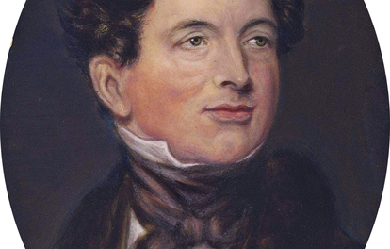
.jpeg?locale=it)
Thomas Moore (28 May 1779 – 25 February 1852), also known as Tom Moore, was an Irish writer, poet, and lyricist celebrated for his Irish Melodies. His setting of English-language verse to old Irish tunes marked the transition in popular Irish culture from Irish to English. Politically, Moore was recognised in England as a press, or "squib", writer for the aristocratic Whigs; in Ireland he was accounted a Catholic patriot.
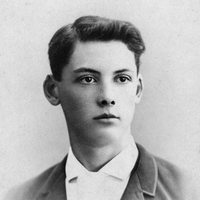
Edwin Arlington Robinson (December 22, 1869—April 6, 1935) was an American poet who won three Pulitzer Prizes for his work. He was born in Head Tide, Lincoln County, Maine but his family moved to Gardiner, Maine in 1871. He described his childhood in Maine as “stark and unhappy”: His parents (who had wanted a girl) did not name him until he was six months old, when they visited a holiday resort—whereupon, other vacationers decided that he should have a name and selected a man from Arlington, Massachusetts to draw a name out of a hat. Throughout his life, he not only hated his given name, but also his family’s habit of calling him “Win.” As an adult, he always used the signature “E. A.”
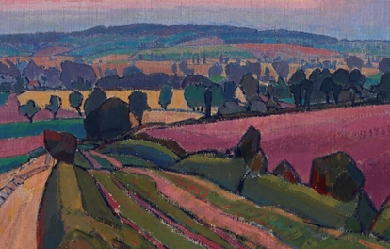
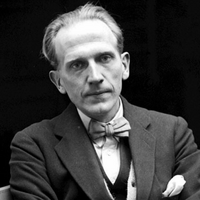
Alan Alexander “A. A.” Milne (/ˈmɪln/; 18 January 1882– 31 January 1956) was an English author, best known for his books about the teddy bear Winnie-the-Pooh and for various poems. Milne was a noted writer, primarily as a playwright, before the huge success of Pooh overshadowed all his previous work. Milne served in both World Wars, joining the British Army in World War I, and was a captain of the British Home Guard in World War II. Biography Alan Alexander Milne was born in Kilburn, London to parents John Vince Milne, who was Scottish, and Sarah Marie Milne (née Heginbotham) and grew up at Henley House School, 6/7 Mortimer Road (now Crescent), Kilburn, a small public school run by his father. One of his teachers was H. G. Wells, who taught there in 1889–90. Milne attended Westminster School and Trinity College, Cambridge where he studied on a mathematics scholarship, graduating with a B.A. in Mathematics in 1903. While there, he edited and wrote for Granta, a student magazine. He collaborated with his brother Kenneth and their articles appeared over the initials AKM. Milne’s work came to the attention of the leading British humour magazine Punch, where Milne was to become a contributor and later an assistant editor. Milne played for the amateur English cricket team the Allahakbarries alongside authors J. M. Barrie and Arthur Conan Doyle. Milne joined the British Army in World War I and served as an officer in the Royal Warwickshire Regiment and later, after a debilitating illness, the Royal Corps of Signals. He was commissioned into the 4th Battalion, Royal Warwickshire Regiment on 17 February 1915 as a second lieutenant (on probation). His commission was confirmed on 20 December 1915. On 7 July 1916, he was injured while serving in the Battle of the Somme and invalided back to England. Having recuperated, he was recruited into Military Intelligence to write propaganda articles for MI 7b between 1916 and 1918. He was discharged on 14 February 1919, and settled in Mallord Street, Chelsea. He relinquished his commission on 19 February 1920, retaining the rank of lieutenant. After the war, he wrote a denunciation of war titled Peace with Honour (1934), which he retracted somewhat with 1940's War with Honour. During World War II, Milne was one of the most prominent critics of fellow English writer P. G. Wodehouse, who was captured at his country home in France by the Nazis and imprisoned for a year. Wodehouse made radio broadcasts about his internment, which were broadcast from Berlin. Although the light-hearted broadcasts made fun of the Germans, Milne accused Wodehouse of committing an act of near treason by cooperating with his country’s enemy. Wodehouse got some revenge on his former friend (e.g., in The Mating Season) by creating fatuous parodies of the Christopher Robin poems in some of his later stories, and claiming that Milne “was probably jealous of all other writers.... But I loved his stuff.” Milne married Dorothy “Daphne” de Sélincourt in 1913 and their son Christopher Robin Milne was born in 1920. In 1925, A. A. Milne bought a country home, Cotchford Farm, in Hartfield, East Sussex. During World War II, A. A. Milne was Captain of the British Home Guard in Hartfield & Forest Row, insisting on being plain “Mr. Milne” to the members of his platoon. He retired to the farm after a stroke and brain surgery in 1952 left him an invalid, and by August 1953 “he seemed very old and disenchanted”. Milne died in January 1956, aged 74. Literary career 1903 to 1925 After graduating from Cambridge in 1903, A. A. Milne contributed humorous verse and whimsical essays to Punch, joining the staff in 1906 and becoming an assistant editor. During this period he published 18 plays and 3 novels, including the murder mystery The Red House Mystery (1922). His son was born in August 1920 and in 1924 Milne produced a collection of children’s poems When We Were Very Young, which were illustrated by Punch staff cartoonist E. H. Shepard. A collection of short stories for children Gallery of Children, and other stories that became part of the Winnie-the-Pooh books, were first published in 1925. Milne was an early screenwriter for the nascent British film industry, writing four stories filmed in 1920 for the company Minerva Films (founded in 1920 by the actor Leslie Howard and his friend and story editor Adrian Brunel). These were The Bump, starring Aubrey Smith; Twice Two; Five Pound Reward; and Bookworms. Some of these films survive in the archives of the British Film Institute. Milne had met Howard when the actor starred in Milne’s play Mr Pim Passes By in London. Looking back on this period (in 1926), Milne observed that when he told his agent that he was going to write a detective story, he was told that what the country wanted from a “Punch humorist” was a humorous story; when two years later he said he was writing nursery rhymes, his agent and publisher were convinced he should write another detective story; and after another two years, he was being told that writing a detective story would be in the worst of taste given the demand for children’s books. He concluded that “the only excuse which I have yet discovered for writing anything is that I want to write it; and I should be as proud to be delivered of a Telephone Directory con amore as I should be ashamed to create a Blank Verse Tragedy at the bidding of others.” 1926 to 1928 Milne is most famous for his two Pooh books about a boy named Christopher Robin after his son, Christopher Robin Milne, and various characters inspired by his son’s stuffed animals, most notably the bear named Winnie-the-Pooh. Christopher Robin Milne’s stuffed bear, originally named “Edward”, was renamed “Winnie-the-Pooh” after a Canadian black bear named Winnie (after Winnipeg), which was used as a military mascot in World War I, and left to London Zoo during the war. “The pooh” comes from a swan called “Pooh”. E. H. Shepard illustrated the original Pooh books, using his own son’s teddy, Growler ("a magnificent bear"), as the model. The rest of Christopher Robin Milne’s toys, Piglet, Eeyore, Kanga, Roo and Tigger, were incorporated into A. A. Milne’s stories, and two more characters– Rabbit and Owl– were created by Milne’s imagination. Christopher Robin Milne’s own toys are now under glass in New York where 750,000 people visit them every year. The fictional Hundred Acre Wood of the Pooh stories derives from Five Hundred Acre Wood in Ashdown Forest in East Sussex, South East England, where the Pooh stories were set. Milne lived on the northern edge of the forest at Cotchford Farm, 51.090°N 0.107°E / 51.090; 0.107, and took his son walking there. E. H. Shepard drew on the landscapes of Ashdown Forest as inspiration for many of the illustrations he provided for the Pooh books. The adult Christopher Robin commented: “Pooh’s Forest and Ashdown Forest are identical”. Popular tourist locations at Ashdown Forest include: Galleon’s Lap, The Enchanted Place, the Heffalump Trap and Lone Pine, Eeyore’s Sad and Gloomy Place, and the wooden Pooh Bridge where Pooh and Piglet invented Poohsticks. Not yet known as Pooh, he made his first appearance in a poem, “Teddy Bear”, published in Punch magazine in February 1924. Pooh first appeared in the London Evening News on Christmas Eve, 1925, in a story called “The Wrong Sort Of Bees”. Winnie-the-Pooh was published in 1926, followed by The House at Pooh Corner in 1928. A second collection of nursery rhymes, Now We Are Six, was published in 1927. All three books were illustrated by E. H. Shepard. Milne also published four plays in this period. He also “gallantly stepped forward” to contribute a quarter of the costs of dramatising P. G. Wodehouse’s A Damsel in Distress. The World of Pooh won the Lewis Carroll Shelf Award in 1958. 1929 onwards The success of his children’s books was to become a source of considerable annoyance to Milne, whose self-avowed aim was to write whatever he pleased and who had, until then, found a ready audience for each change of direction: he had freed pre-war Punch from its ponderous facetiousness; he had made a considerable reputation as a playwright (like his idol J. M. Barrie) on both sides of the Atlantic; he had produced a witty piece of detective writing in The Red House Mystery (although this was severely criticised by Raymond Chandler for the implausibility of its plot). But once Milne had, in his own words, "said goodbye to all that in 70,000 words" (the approximate length of his four principal children’s books), he had no intention of producing any reworkings lacking in originality, given that one of the sources of inspiration, his son, was growing older. In his literary home, Punch, where the When We Were Very Young verses had first appeared, Methuen continued to publish whatever Milne wrote, including the long poem “The Norman Church” and an assembly of articles entitled Year In, Year Out (which Milne likened to a benefit night for the author). In 1930, Milne adapted Kenneth Grahame’s novel The Wind in the Willows for the stage as Toad of Toad Hall. The title was an implicit admission that such chapters as Chapter 7, “The Piper at the Gates of Dawn”, could not survive translation to the theatre. A special introduction written by Milne is included in some editions of Grahame’s novel. Legacy and commemoration The rights to A. A. Milne’s Pooh books were left to four beneficiaries: his family, the Royal Literary Fund, Westminster School and the Garrick Club. After Milne’s death in 1956, one week and six days after his 74th birthday, his widow sold her rights to the Pooh characters to Stephen Slesinger, whose widow sold the rights after Slesinger’s death to the Walt Disney Company, which has made many Pooh cartoon movies, a Disney Channel television show, as well as Pooh-related merchandise. In 2001, the other beneficiaries sold their interest in the estate to the Disney Corporation for $350m. Previously Disney had been paying twice-yearly royalties to these beneficiaries. The estate of E. H. Shepard also received a sum in the deal. The copyright on Pooh expires in 2026. In 2008, a collection of original illustrations featuring Winnie-the-Pooh and his animal friends sold for more than £1.2 million at auction in Sotheby’s, London. Forbes magazine ranked Winnie the Pooh the most valuable fictional character in 2002; Winnie the Pooh merchandising products alone had annual sales of more than $5.9 billion. In 2005, Winnie the Pooh generated $6 billion, a figure surpassed by only Mickey Mouse. A memorial plaque in Ashdown Forest, unveiled by Christopher Robin in 1979, commemorates the work of A. A. Milne and Shepard in creating the world of Pooh. Milne once wrote of Ashdown Forest: “In that enchanted place on the top of the forest a little boy and his bear will always be playing”. In 2003, Winnie the Pooh was listed at number 7 on the BBC’s survey The Big Read. In 2006, Winnie the Pooh received a star on the Hollywood Walk of Fame, marking the 80th birthday of Milne’s creation. That same year a UK poll saw Winnie the Pooh voted onto the list of icons of England. Several of Milne’s children’s poems were set to music by the composer Harold Fraser-Simson. His poems have been parodied many times, including with the books When We Were Rather Older and Now We Are Sixty. The 1963 film The King’s Breakfast was based on Milne’s poem of the same name. Religious views Milne did not speak out much on the subject of religion, although he used religious terms to explain his decision, while remaining a pacifist, to join the British Home Guard: “In fighting Hitler”, he wrote, “we are truly fighting the Devil, the Anti-Christ... Hitler was a crusader against God.” His best known comment on the subject was recalled on his death: The Old Testament is responsible for more atheism, agnosticism, disbelief—call it what you will—than any book ever written; it has emptied more churches than all the counter-attractions of cinema, motor bicycle and golf course. He also wrote the poem “Explained”: Works Novels * Lovers in London (1905. Some consider this more of a short story collection; Milne did not like it and considered The Day’s Play as his first book.) * Once on a Time (1917) * Mr. Pim (1921) (A novelisation of his play Mr. Pim Passes By (1919)) * The Red House Mystery (1922) * Two People (1931) (Inside jacket claims this is Milne’s first attempt at a novel.) * Four Days’ Wonder (1933) * Chloe Marr (1946) Non-fiction * Peace With Honour (1934) * It’s Too Late Now: The Autobiography of a Writer (1939) * War With Honour (1940) * War Aims Unlimited (1941) * Year In, Year Out (1952) (illustrated by E. H. Shepard) Punch articles * The Day’s Play (1910) * Once A Week (1914) * The Holiday Round (1912) * The Sunny Side (1921) * Those Were the Days (1929) [The four volumes above, compiled] Newspaper articles and book introductions * The Chronicles of Clovis by “Saki” (1911) [Introduction to] * Not That It Matters (1920) * By Way of Introduction (1929) Story collections for children * A Gallery of Children (1925) * Winnie-the-Pooh (1926) (illustrated by Ernest H. Shepard) * The House at Pooh Corner (1928) (illustrated by E. H. Shepard) * Short Stories Poetry collections for children * When We Were Very Young (1924) (illustrated by E. H. Shepard) * Now We Are Six (1927) (illustrated by E. H. Shepard) Story collections * The Secret and other stories (1929) * The Birthday Party (1948) * A Table Near the Band (1950) Poetry * For the Luncheon Interval [poems from Punch] * When We Were Very Young (1924) (illustrated by E. H. Shepard) * Now We Are Six (1927) (illustrated by E. H. Shepard) * Behind the Lines (1940) * The Norman Church (1948) * “The Knight Whose Armor Didn’t Squeak” Screenplays and plays * Wurzel-Flummery (1917) * Belinda (1918) * The Boy Comes Home (1918) * Make-Believe (1918) (children’s play) * The Camberley Triangle (1919) * Mr. Pim Passes By (1919) * The Red Feathers (1920) * The Bump (1920, Minerva Films), starring Aubrey Smith * Twice Two (1920, Minerva Films) * Five Pound Reward (1920, Minerva Films) * Bookworms (1920, Minerva Films) * The Great Broxopp (1921) * The Dover Road (1921) * The Lucky One (1922) * The Truth About Blayds (1922) * The Artist: A Duologue (1923) * Give Me Yesterday (1923) (a.k.a. Success in the UK) * Ariadne (1924) * The Man in the Bowler Hat: A Terribly Exciting Affair (1924) * To Have the Honour (1924) * Portrait of a Gentleman in Slippers (1926) * Success (1926) * Miss Marlow at Play (1927) * The Fourth Wall or The Perfect Alibi (1928) (later adapted for the film Birds of Prey (1930), directed by Basil Dean) * The Ivory Door (1929) * Toad of Toad Hall (1929) (adaptation of The Wind in the Willows) * Michael and Mary (1930) * Other People’s Lives (1933) (a.k.a. They Don’t Mean Any Harm) * Miss Elizabeth Bennet (1936) [based on Pride and Prejudice] * Sarah Simple (1937) * Gentleman Unknown (1938) * The General Takes Off His Helmet (1939) in The Queen’s Book of the Red Cross * The Ugly Duckling (1941) * Before the Flood (1951). References Wikipedia—https://en.wikipedia.org/wiki/A._A._Milne
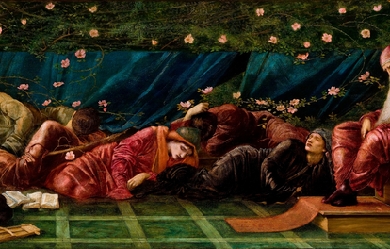
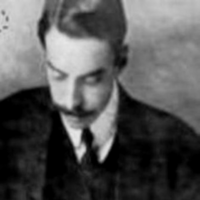
Arturo Borja Pérez, (n. Quito, 1892 - f. Ibídem, 13 de noviembre de 1912) fue un poeta ecuatoriano, perteneciente al movimiento llamado “La Generación Decapitada” y el primero del grupo en despuntar como modernista. Es muy escasa su obra artística pero suficiente para determinar la calidad de poeta: una corona de veinte composiciones forma el libro titulado La flauta de ónix, y seis poemas más; obras que fueron publicadas póstumamente. Se suicidó en la ciudad de Quito, el 13 de noviembre de 1912, contando apenas con 20 años de edad. Ofrenda de rosas (A Arturo Borja) Recuerdo que te hallé por mi camino como un Verlaine aún adolescente, ¡y daba el signo de un fatal destino tu alma de estirpe lírica y ardiente! Y ambos fraternizamos; que tus rosas para todas las almas entreabrías, ¡haciéndote en las horas humildosas dueño de todas las melancolías...! Quién volviera a tus ojos, en ofrenda, la vida humilde que suspira y canta, como el Rubí de manos de leyenda que antaño dijo a Lázaro: ¡Levanta! Evoco el sueño juvenil de un día que, en el Claustro del Arte bien sentido, matamos la viril hipocrecía, y laboramos lentos el gemido. Y ahora la luna de tu sistro agrestre, al visitar nuestro santurario frío, da su color de lágrima celeste en el cristal de tu crisol vacío... ¡Adiós, fuente de lánguido quebranto!, que volvías un Fénix mi rosal, ¡encantando las rosas sin encanto cuando el encanto huía con el mal! ¡Adiós, fuente de lágrimas cantoras que halagaron el viaje juvenil!; de la angustia de Abril refrescadoras como lluvias caídas en Abril... Duerme y reposa; que quizás es bueno sólo el sueño sin sueño en que caíste, ¡la flor de espino y el laurel de heleno entremezclados en tu frente triste! —Humberto Fierro Feliz tú, hermano mío (Al espíritu fraternal de Arturo Borja) Poeta, hermano mío, que como yo sufriste, el frío del vacío y la grandeza triste de saberte una nube en prisión de rocío; tu buen hermano en lira, en rosa, azul y luna que inspira la mentira de la verde laguna, sabe envidiar tu suerte porque tu suerte admira. Lloro tu vida breve por lo que dado hubieras, pero la leve nieve de tus quimeras en nube se transforma y desde lo alto llueve. Poeta, hermano mío, ya no estarás más triste, ni el frío del vacío sentirás que sentiste... Ya no eres una nube encerrada en rocío; después de que partiste tu lluvia se hizo un río que da savia a tu rosa y a tu bulbul alpiste... ¡Feliz tú, hermano mío! —Alejandro Sux
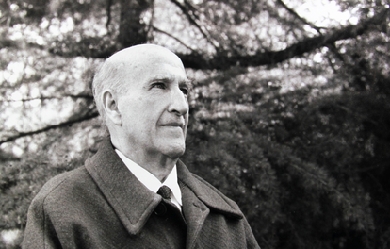
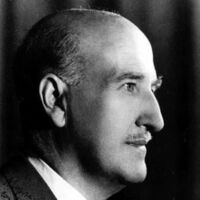
Vicente Pío Marcelino Cirilo Aleixandre y Merlo (Sevilla, 26 de abril de 1898 – Madrid, 13 de diciembre de 1984) fue un poeta español de la llamada Generación del 27. Elegido académico en sesión del día 30 de junio de 1949, ingresó en la Real Academia Española el 22 de enero de 1950. Ocupó el sillón de la letra O. Premio Nacional de Literatura en 1933 por La destrucción o el amor, Premio de la Crítica en 1963 por En un vasto dominio, y en 1969, por Poemas de la consumación, y Premio Nobel de Literatura en 1977.

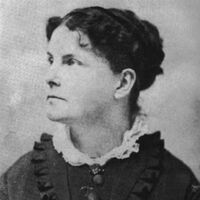
Celia Laighton Thaxter (June 29, 1835 – August 25, 1894) was an American writer of poetry and stories. She was born in Portsmouth, New Hampshire. Thaxter grew up in the Isles of Shoals, first on White Island, where her father, Thomas Laighton, was a lighthouse keeper, and then on Smuttynose and Appledore Islands. When she was sixteen, she married Levi Thaxter and moved to the mainland, residing first in Watertown, Massachusetts at a property his father owned. Celia died suddenly while on Appledore Island. She was buried not far from her cottage, which unfortunately burned in the 1914 fire that destroyed The Appledore House hotel.
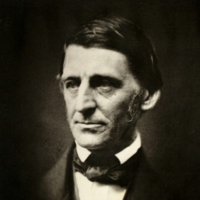
Ralph Waldo Emerson (May 25, 1803 – April 27, 1882) was an American essayist, lecturer, and poet, who led the Transcendentalist movement of the mid-19th century. He was seen as a champion of individualism and a prescient critic of the countervailing pressures of society, and he disseminated his thoughts through dozens of published essays and more than 1, public lectures across the United States. Emerson gradually moved away from the religious and social beliefs of his contemporaries, formulating and expressing the philosophy of Transcendentalism in his 1836 essay, Nature. Following this ground-breaking work, he gave a speech entitled The American Scholar in 1837, which Oliver Wendell Holmes, Sr. considered to be America's "Intellectual Declaration of Independence". Emerson wrote most of his important essays as lectures first, then revised them for print. His first two collections of essays – Essays: First Series and Essays: Second Series, published respectively in 1841 and 1844 – represent the core of his thinking, and include such well-known essays as Self-Reliance, The Over-Soul, Circles, The Poet and Experience. Together with Nature, these essays made the decade from the mid-1830s to the mid-1840s Emerson's most fertile period. Emerson wrote on a number of subjects, never espousing fixed philosophical tenets, but developing certain ideas such as individuality, freedom, the ability for humankind to realize almost anything, and the relationship between the soul and the surrounding world. Emerson's "nature" was more philosophical than naturalistic; "Philosophically considered, the universe is composed of Nature and the Soul." While his writing style can be seen as somewhat impenetrable, and was thought so even in his own time, Emerson's essays remain among the linchpins of American thinking, and Emerson's work has greatly influenced the thinkers, writers and poets that have followed him. When asked to sum up his work, he said his central doctrine was "the infinitude of the private man.” Early life, family, and education Emerson was born in Boston, Massachusetts on May 25, 1803, son of Ruth Haskins and the Rev. William Emerson, a Unitarian minister. He was named after his mother's brother Ralph and the father's great-grandmother Rebecca Waldo. Ralph Waldo was the second of five sons who survived into adulthood; the others were William, Edward, Robert Bulkeley, and Charles. Three other children—Phebe, John Clarke, and Mary Caroline–died in childhood. The young Ralph Waldo Emerson's father died from stomach cancer on May 12, 1811, less than two weeks before Emerson's eighth birthday. Emerson was raised by his mother, with the help of the other women in the family; his aunt Mary Moody Emerson in particular had a profound effect on Emerson. She lived with the family off and on, and maintained a constant correspondence with Emerson until her death in 1863. Emerson's formal schooling began at the Boston Latin School in 1812 when he was nine. In October 1817, at 14, Emerson went to Harvard College and was appointed freshman messenger for the president, requiring Emerson to fetch delinquent students and send messages to faculty. Midway through his junior year, Emerson began keeping a list of books he had read and started a journal in a series of notebooks that would be called "Wide World". He took outside jobs to cover his school expenses, including as a waiter for the Junior Commons and as an occasional teacher working with his uncle Samuel in Waltham, Massachusetts. By his senior year, Emerson decided to go by his middle name, Waldo. Emerson served as Class Poet; as was custom, he presented an original poem on Harvard's Class Day, a month before his official graduation on August 29, 1821, when he was 18. He did not stand out as a student and graduated in the exact middle of his class of 59 people. In 1826, faced with poor health, Emerson went to seek out warmer climates. He first went to Charleston, South Carolina, but found the weather was still too cold. He then went further south, to St. Augustine, Florida, where he took long walks on the beach, and began writing poetry. While in St. Augustine, he made the acquaintance of Prince Achille Murat. Murat, the nephew of Napoleon Bonaparte, was only two years his senior; they became extremely good friends and enjoyed one another's company. The two engaged in enlightening discussions on religion, society, philosophy, and government, and Emerson considered Murat an important figure in his intellectual education. While in St. Augustine, Emerson had his first experience of slavery. At one point, he attended a meeting of the Bible Society while there was a slave auction taking place in the yard outside. He wrote, "One ear therefore heard the glad tidings of great joy, whilst the other was regaled with 'Going, gentlemen, going’!” Early career After Harvard, Emerson assisted his brother William in a school for young women established in their mother's house, after he had established his own school in Chelmsford, Massachusetts; when his brother William went to Göttingen to study divinity, Emerson took charge of the school. Over the next several years, Emerson made his living as a schoolmaster, then went to Harvard Divinity School. Emerson's brother Edward, two years younger than he, entered the office of lawyer Daniel Webster, after graduating Harvard first in his class. Edward's physical health began to deteriorate and he soon suffered a mental collapse as well; he was taken to McLean Asylum in June 1828 at age 23. Although he recovered his mental equilibrium, he died in 1834 from apparently longstanding tuberculosis. Another of Emerson's bright and promising younger brothers, Charles, born in 1808, died in 1836, also of tuberculosis, making him the third young person in Emerson's innermost circle to die in a period of a few years. Emerson met his first wife, Ellen Louisa Tucker, in Concord, New Hampshire on Christmas Day, 1827, and married her when she was 18. The couple moved to Boston, with Emerson's mother Ruth moving with them to help take care of Ellen, who was already sick with tuberculosis. Less than two years later, Ellen died at the age of 20 on February 8, 1831, after uttering her last words: "I have not forgot the peace and joy." Emerson was heavily affected by her death and visited her grave in Roxbury daily. In a journal entry dated March 29, 1832, Emerson wrote, "I visited Ellen's tomb & opened the coffin." Boston's Second Church invited Emerson to serve as its junior pastor and he was ordained on January 11, 1829. His initial salary was $1, a year, increasing to $1, in July, but with his church role he took on other responsibilities: he was chaplain to the Massachusetts legislature, and a member of the Boston school committee. His church activities kept him busy, though during this period, facing the imminent death of his wife, he began to doubt his own beliefs. After his wife's death, he began to disagree with the church's methods, writing in his journal in June 1832: "I have sometimes thought that, in order to be a good minister, it was necessary to leave the ministry. The profession is antiquated. In an altered age, we worship in the dead forms of our forefathers." His disagreements with church officials over the administration of the Communion service and misgivings about public prayer eventually led to his resignation in 1832. As he wrote, "This mode of commemorating Christ is not suitable to me. That is reason enough why I should abandon it." As one Emerson scholar has pointed out, "Doffing the decent black of the pastor, he was free to choose the gown of the lecturer and teacher, of the thinker not confined within the limits of an institution or a tradition." Emerson toured Europe in 1833 and later wrote of his travels in English Traits (1857). He left aboard the brig Jasper on Christmas Day, 1832, sailing first to Malta. During his European trip, he spent several months in Italy, visiting Rome, Florence and Venice, among other cities. When in Rome, he met with John Stuart Mill, who gave him a letter of recommendation to meet Thomas Carlyle. He went to Switzerland, and had to be dragged by fellow passengers to visit Voltaire's home in Ferney, "protesting all the way upon the unworthiness of his memory." He then went on to Paris, a "loud modern New York of a place,", where he visited the Jardin des Plantes. He was greatly moved by the organization of plants according to Jussieu's system of classification, and the way all such objects were related and connected. As Richardson says, "Emerson's moment of insight into the interconnectedness of things in the Jardin des Plantes was a moment of almost visionary intensity that pointed him away from theology and toward science." Moving north to England, Emerson met William Wordsworth, Samuel Taylor Coleridge, and Thomas Carlyle. Carlyle in particular was a strong influence on Emerson; Emerson would later serve as an unofficial literary agent in the United States for Carlyle, and in March 1835, he tried to convince Carlyle to come to America to lecture. The two would maintain correspondence until Carlyle's death in 1881. Emerson returned to the United States on October 9, 1833, and lived with his mother in Newton, Massachusetts, until October, 1834, when he moved to Concord, Massachusetts, to live with his step-grandfather Dr. Ezra Ripley at what was later named The Old Manse. Seeing the budding Lyceum movement, which provided lectures on all sorts of topics, Emerson saw a possible career as a lecturer. On November 5, 1833, he made the first of what would eventually be some 1, lectures, discussing The Uses of Natural History in Boston. This was an expanded account of his experience in Paris. In this lecture, he set out some of his important beliefs and the ideas he would later develop in his first published essay Nature: Nature is a language and every new fact one learns is a new word; but it is not a language taken to pieces and dead in the dictionary, but the language put together into a most significant and universal sense. I wish to learn this language, not that I may know a new grammar, but that I may read the great book that is written in that tongue. On January 24, 1835, Emerson wrote a letter to Lydia Jackson proposing marriage. Her acceptance reached him by mail on the 28th. In July 1835, he bought a house on the Cambridge and Concord Turnpike in Concord, Massachusetts which he named "Bush"; it is now open to the public as the Ralph Waldo Emerson House. Emerson quickly became one of the leading citizens in the town. He gave a lecture to commemorate the 200th anniversary of the town of Concord on September 12, 1835. Two days later, he married Lydia Jackson in her home town of Plymouth, Massachusetts, and moved to the new home in Concord together with Emerson's mother on September 15. Emerson quickly changed his wife's name to Lidian, and would call her Queenie, and sometimes Asia, and she called him Mr. Emerson. Their children were Waldo, Ellen, Edith, and Edward Waldo Emerson. Ellen was named for his first wife, at Lidian's suggestion. Emerson was poor when he was at Harvard, and later supported his family for much of his life. He inherited a fair amount of money after his first wife's death, though he had to file a lawsuit against the Tucker family in 1836 to get it. He received $11, in May 1834, and a further $11,. in July 1837. In 1834, he considered that he had an income of $1, a year from the initial payment of the estate, equivalent to what he had earned as a pastor. Literary career and Transcendentalism On September 8, 1836, the day before the publication of Nature, Emerson met with Henry Hedge, George Putnam and George Ripley to plan periodic gatherings of other like-minded intellectuals. This was the beginning of the Transcendental Club, which served as a center for the movement. Its first official meeting was held on September 19, 1836. On September 1, 1837, women attended a meeting of the Transcendental Club for the first time. Emerson invited Margaret Fuller, Elizabeth Hoar and Sarah Ripley for dinner at his home before the meeting to ensure that they would be present for the evening get-together. Fuller would prove to be an important figure in Transcendentalism. Emerson anonymously published his first essay, Nature, on September 9, 1836. A year later, on August 31, 1837, Emerson delivered his now-famous Phi Beta Kappa address, "The American Scholar", then known as "An Oration, Delivered before the Phi Beta Kappa Society at Cambridge"; it was renamed for a collection of essays (which included the first general publication of "Nature") in 1849. Friends urged him to publish the talk, and he did so, at his own expense, in an edition of 500 copies, which sold out in a month. In the speech, Emerson declared literary independence in the United States and urged Americans to create a writing style all their own and free from Europe. James Russell Lowell, who was a student at Harvard at the time, called it "an event without former parallel on our literary annals". Another member of the audience, Reverend John Pierce, called it "an apparently incoherent and unintelligible address". In 1837, Emerson befriended Henry David Thoreau. Though they had likely met as early as 1835, in the fall of 1837, Emerson asked Thoreau, "Do you keep a journal?" The question went on to have a lifelong inspiration for Thoreau. Emerson's own journal comes to 16 large volumes, in the definitive Harvard University Press edition published between 1960 and 1982. Some scholars consider the journal to be Emerson's key literary work. In March 1837, Emerson gave a series of lectures on The Philosophy of History at Boston's Masonic Temple. This was the first time he managed a lecture series on his own, and was the beginning of his serious career as a lecturer. The profits from this series of lectures were much larger than when he was paid by an organization to talk, and Emerson continued to manage his own lectures often throughout his lifetime. He would eventually give as many as 80 lectures a year, traveling across the northern part of the United States. He traveled as far as St. Louis, Des Moines, Minneapolis, and California. On July 15, 1838, Emerson was invited to Divinity Hall, Harvard Divinity School for the school's graduation address, which came to be known as his "Divinity School Address". Emerson discounted Biblical miracles and proclaimed that, while Jesus was a great man, he was not God: historical Christianity, he said, had turned Jesus into a "demigod, as the Orientals or the Greeks would describe Osiris or Apollo". His comments outraged the establishment and the general Protestant community. For this, he was denounced as an atheist, and a poisoner of young men's minds. Despite the roar of critics, he made no reply, leaving others to put forward a defense. He was not invited back to speak at Harvard for another thirty years. The Transcendental group began to publish its flagship journal, The Dial, in July 1840. They planned the journal as early as October 1839, but work did not begin until the first week of 1840. George Ripley was its managing editor and Margaret Fuller was its first editor, having been hand-chosen by Emerson after several others had declined the role. Fuller stayed on for about two years and Emerson took over, utilizing the journal to promote talented young writers including Ellery Channing and Thoreau. It was in 1841 that Emerson published Essays, his second book, which included the famous essay, "Self-Reliance". His aunt called it a "strange medley of atheism and false independence", but it gained favorable reviews in London and Paris. This book, and its popular reception, more than any of Emerson's contributions to date laid the groundwork for his international fame. In January 1842 Emerson's first son Waldo died from scarlet fever. Emerson wrote of his grief in the poem "Threnody" ("For this losing is true dying"), and the essay "Experience". That same month, William James was born, and Emerson agreed to be his godfather. Bronson Alcott announced his plans in November 1842 to find "a farm of a hundred acres in excellent condition with good buildings, a good orchard and grounds". Charles Lane purchased a 90-acre (360, m2) farm in Harvard, Massachusetts, in May 1843 for what would become Fruitlands, a community based on Utopian ideals inspired in part by Transcendentalism. The farm would run based on a communal effort, using no animals for labor; its participants would eat no meat and use no wool or leather. Emerson said he felt "sad at heart" for not engaging in the experiment himself. Even so, he did not feel Fruitlands would be a success. "Their whole doctrine is spiritual", he wrote, "but they always end with saying, Give us much land and money". Even Alcott admitted he was not prepared for the difficulty in operating Fruitlands. "None of us were prepared to actualize practically the ideal life of which we dreamed. So we fell apart", he wrote. After its failure, Emerson helped buy a farm for Alcott's family in Concord which Alcott named "Hillside". The Dial ceased publication in April 1844; Horace Greeley reported it as an end to the "most original and thoughtful periodical ever published in this country". (An unrelated magazine of the same name would be published in several periods through 1929.) In 1844, Emerson published his second collection of essays, entitled "Essays: Second Series." This collection included "The Poet," "Experience," "Gifts," and an essay entitled "Nature," a different work from the 1836 essay of the same name. Emerson made a living as a popular lecturer in New England and much of the rest of the country. He had begun lecturing in 1833; by the 1850s he was giving as many as 80 per year. He addressed the Boston Society for the Diffusion of Useful Knowledge and the Gloucester Lyceum, among others. Emerson spoke on a wide variety of subjects and many of his essays grew out of his lectures. He charged between $10 and $50 for each appearance, bringing him as much as $2, in a typical winter "season". This was more than his earnings from other sources. In some years, he earned as much as $900 for a series of six lectures, and in another, for a winter series of talks in Boston, he netted $1,. He eventually gave some 1, lectures in his lifetime. His earnings allowed him to expand his property, buying 11 acres (45, m2) of land by Walden Pond and a few more acres in a neighboring pine grove. He wrote that he was "landlord and waterlord of 14 acres, more or less". Emerson was introduced to Indian philosophy when reading the works of French philosopher Victor Cousin. In 1845, Emerson's journals show he was reading the Bhagavad Gita and Henry Thomas Colebrooke's Essays on the Vedas. Emerson was strongly influenced by the Vedas, and much of his writing has strong shades of nondualism. One of the clearest examples of this can be found in his essay "The Over-soul”: We live in succession, in division, in parts, in particles. Meantime within man is the soul of the whole; the wise silence; the universal beauty, to which every part and particle is equally related, the eternal ONE. And this deep power in which we exist and whose beatitude is all accessible to us, is not only self-sufficing and perfect in every hour, but the act of seeing and the thing seen, the seer and the spectacle, the subject and the object, are one. We see the world piece by piece, as the sun, the moon, the animal, the tree; but the whole, of which these are shining parts, is the soul. From 1847 to 1848, he toured England, Scotland, and Ireland. He also visited Paris between the February Revolution and the bloody June Days. When he arrived, he saw the stumps where trees had been cut down to form barricades in the February riots. On May 21 he stood on the Champ de Mars in the midst of mass celebrations for concord, peace and labor. He wrote in his journal: "At the end of the year we shall take account, & see if the Revolution was worth the trees." In February 1852 Emerson and James Freeman Clarke and William Henry Channing edited an edition of the works and letters of Margaret Fuller, who had died in 1850. Within a week of her death, her New York editor Horace Greeley suggested to Emerson that a biography of Fuller, to be called Margaret and Her Friends, be prepared quickly "before the interest excited by her sad decease has passed away". Published with the title The Memoirs of Margaret Fuller Ossoli, Fuller's words were heavily censored or rewritten. The three editors were not concerned about accuracy; they believed public interest in Fuller was temporary and that she would not survive as a historical figure. Even so, for a time, it was the best-selling biography of the decade and went through thirteen editions before the end of the century. Walt Whitman published the innovative poetry collection Leaves of Grass in 1855 and sent a copy to Emerson for his opinion. Emerson responded positively, sending a flattering five-page letter as a response. Emerson's approval helped the first edition of Leaves of Grass stir up significant interest and convinced Whitman to issue a second edition shortly thereafter. This edition quoted a phrase from Emerson's letter, printed in gold leaf on the cover: "I Greet You at the Beginning of a Great Career". Emerson took offense that this letter was made public and later became more critical of the work. Civil War years Emerson was staunchly anti-slavery, but he did not appreciate being in the public limelight and was hesitant about lecturing on the subject. He did, however, give a number of lectures during the pre-Civil War years, beginning as early as November, 1837. A number of his friends and family members were more active abolitionists than he, at first, but from 1844 on, he took a more active role in opposing slavery. He gave a number of speeches and lectures, and notably welcomed John Brown to his home during Brown's visits to Concord. He voted for Abraham Lincoln in 1860, but Emerson was disappointed that Lincoln was more concerned about preserving the Union than eliminating slavery outright. Once the American Civil War broke out, Emerson made it clear that he believed in immediate emancipation of the slaves. Around this time, in 1860, Emerson published The Conduct of Life, his final original collection of essays. In this book, Emerson "grappled with some of the thorniest issues of the moment," and "his experience in the abolition ranks is a telling influence in his conclusions. In the book's opening essay, Fate, Emerson wrote, "The question of the times resolved itself into a practical question of the conduct of life. How shall I live?" Emerson visited Washington, D.C, at the end of January, 1862. He gave a public lecture at the Smithsonian on January 31, 1862, and declared: "The South calls slavery an institution... I call it destitution... Emancipation is the demand of civilization". The next day, February 1, his friend Charles Sumner took him to meet Lincoln at the White House. Lincoln was familiar with Emerson's work, having previously seen him lecture. Emerson's misgivings about Lincoln began to soften after this meeting. In 1865, he spoke at a memorial service held for Lincoln in Concord: "Old as history is, and manifold as are its tragedies, I doubt if any death has caused so much pain as this has caused, or will have caused, on its announcement." Emerson also met a number of high-ranking government officials, including Salmon P. Chase, the secretary of the treasury, Edward Bates, the attorney general, Edwin M. Stanton, the secretary of war, Gideon Welles, the secretary of the navy, and William Seward, the secretary of state. On May 6, 1862, Emerson's protégé Henry David Thoreau died of tuberculosis at the age of 44 and Emerson delivered his eulogy. Emerson would continuously refer to Thoreau as his best friend, despite a falling out that began in 1849 after Thoreau published A Week on the Concord and Merrimack Rivers. Another friend, Nathaniel Hawthorne, died two years after Thoreau in 1864. Emerson served as one of the pallbearers as Hawthorne was buried in Concord, as Emerson wrote, "in a pomp of sunshine and verdure". He was elected a Fellow of the American Academy of Arts and Sciences in 1864. Final years and death Starting in 1867, Emerson's health began declining; he wrote much less in his journals. Beginning as early as the summer of 1871 or in the spring of 1872, Emerson started having memory problems and suffered from aphasia. By the end of the decade, he forgot his own name at times and, when anyone asked how he felt, he responded, "Quite well; I have lost my mental faculties, but am perfectly well". Emerson's Concord home caught fire on July 24, 1872; Emerson called for help from neighbors and, giving up on putting out the flames, all attempted to save as many objects as possible. The fire was put out by Ephraim Bull, Jr., the one-armed son of Ephraim Wales Bull. Donations were collected by friends to help the Emersons rebuild, including $5, gathered by Francis Cabot Lowell, another $10, collected by LeBaron Russell Briggs, and a personal donation of $1, from George Bancroft. Support for shelter was offered as well; though the Emersons ended up staying with family at the Old Manse, invitations came from Anne Lynch Botta, James Elliot Cabot, James Thomas Fields and Annie Adams Fields. The fire marked an end to Emerson's serious lecturing career; from then on, he would lecture only on special occasions and only in front of familiar audiences. While the house was being rebuilt, Emerson took a trip to England, continental Europe, and Egypt. He left on October 23, 1872, along with his daughter Ellen while his wife Lidian spent time at the Old Manse and with friends. Emerson and his daughter Ellen returned to the United States on the ship Olympus along with friend Charles Eliot Norton on April 15, 1873. Emerson's return to Concord was celebrated by the town and school was canceled that day. In late 1874 Emerson published an anthology of poetry called Parnassus, which included poems by Anna Laetitia Barbauld, Julia Caroline Dorr, Jean Ingelow, Lucy Larcom, Jones Very, as well as Thoreau and several others. The anthology was originally prepared as early as the fall of 1871 but was delayed when the publishers asked for revisions. The problems with his memory had become embarrassing to Emerson and he ceased his public appearances by 1879. As Holmes wrote, "Emerson is afraid to trust himself in society much, on account of the failure of his memory and the great difficulty he finds in getting the words he wants. It is painful to witness his embarrassment at times". On April 21, 1882, Emerson was diagnosed with pneumonia. He died on April 27, 1882. Emerson is buried in Sleepy Hollow Cemetery, Concord, Massachusetts. He was placed in his coffin wearing a white robe given by American sculptor Daniel Chester French. Lifestyle and beliefs Emerson's religious views were often considered radical at the time. He believed that all things are connected to God and, therefore, all things are divine. Critics believed that Emerson was removing the central God figure; as Henry Ware, Jr. said, Emerson was in danger of taking away "the Father of the Universe" and leaving "but a company of children in an orphan asylum". Emerson was partly influenced by German philosophy and Biblical criticism. His views, the basis of Transcendentalism, suggested that God does not have to reveal the truth but that the truth could be intuitively experienced directly from nature. Emerson did not become an ardent abolitionist until 1844, though his journals show he was concerned with slavery beginning in his youth, even dreaming about helping to free slaves. In June 1856, shortly after Charles Sumner, a United States Senator, was beaten for his staunch abolitionist views, Emerson lamented that he himself was not as committed to the cause. He wrote, "There are men who as soon as they are born take a bee-line to the axe of the inquisitor... Wonderful the way in which we are saved by this unfailing supply of the moral element". After Sumner's attack, Emerson began to speak out about slavery. "I think we must get rid of slavery, or we must get rid of freedom", he said at a meeting at Concord that summer. Emerson used slavery as an example of a human injustice, especially in his role as a minister. In early 1838, provoked by the murder of an abolitionist publisher from Alton, Illinois named Elijah Parish Lovejoy, Emerson gave his first public antislavery address. As he said, "It is but the other day that the brave Lovejoy gave his breast to the bullets of a mob, for the rights of free speech and opinion, and died when it was better not to live". John Quincy Adams said the mob-murder of Lovejoy "sent a shock as of any earthquake throughout this continent". However, Emerson maintained that reform would be achieved through moral agreement rather than by militant action. By August 1, 1844, at a lecture in Concord, he stated more clearly his support for the abolitionist movement. He stated, "We are indebted mainly to this movement, and to the continuers of it, for the popular discussion of every point of practical ethics". Emerson may have had erotic thoughts about at least one man. During his early years at Harvard, he found himself attracted to a young freshman named Martin Gay about whom he wrote sexually charged poetry. He also had a number of crushes on various women throughout his life, such as Anna Barker and Caroline Sturgis. Legacy As a lecturer and orator, Emerson—nicknamed the Concord Sage—became the leading voice of intellectual culture in the United States. Herman Melville, who had met Emerson in 1849, originally thought he had "a defect in the region of the heart" and a "self-conceit so intensely intellectual that at first one hesitates to call it by its right name", though he later admitted Emerson was "a great man". Theodore Parker, a minister and Transcendentalist, noted Emerson's ability to influence and inspire others: "the brilliant genius of Emerson rose in the winter nights, and hung over Boston, drawing the eyes of ingenuous young people to look up to that great new start, a beauty and a mystery, which charmed for the moment, while it gave also perennial inspiration, as it led them forward along new paths, and towards new hopes". Emerson's work not only influenced his contemporaries, such as Walt Whitman and Henry David Thoreau, but would continue to influence thinkers and writers in the United States and around the world down to the present. Notable thinkers who recognize Emerson's influence include Nietzsche and William James, Emerson's godson. "There is little disagreement that Emerson was the most influential writer of 19th-century America, though these days he is largely the concern of scholars. Walt Whitman, Henry David Thoreau and William James were all positive Emersonians, while Herman Melville, Nathaniel Hawthorne and Henry James were Emersonians in denial — while they set themselves in opposition to the sage, there was no escaping his influence. To T. S. Eliot, Emerson’s essays were an “encumbrance.” Waldo the Sage was eclipsed from 1914 until 1965, when he returned to shine, after surviving in the work of major American poets like Robert Frost, Wallace Stevens and Hart Crane." In his book The American Religion, Harold Bloom repeatedly refers to Emerson as "The prophet of the American Religion," which in the context of the book refers to indigenously American religions such as Mormonism and Christian Science, which arose largely in Emerson's lifetime, but also to Mainline Protestant churches that Bloom says have become in the United States more gnostic than their European counterparts. In The Western Canon, Harold Bloom compares Emerson to Michel de Montaigne: "The only equivalent reading experience that I know is to reread endlessly in the notebooks and journals of Ralph Waldo Emerson, the American version of Montaigne." Several of Emerson's poems were included in Bloom's The Best Poems of the English Language, although he wrote that none of the poems are as outstanding as the best of Emerson's essays, which Bloom listed as Self-Reliance, Circles, Experience, and "nearly all of Conduct of Life”. Namesakes * In May 2006, 168 years after Emerson delivered his "Divinity School Address," Harvard Divinity School announced the establishment of the Emerson Unitarian Universalist Association Professorship. Harvard has also named a building, Emerson Hall (1900), after him. * Emerson Hill, a neighborhood in the New York City borough of Staten Island, is named for his eldest brother, Judge William Emerson, who resided there from 1837 to 1864. * The Emerson String Quartet, formed in 1976, took their name from Ralph Waldo Emerson. * The Ralph Waldo Emerson Prize is awarded annually to high school students for essays on historical subjects. * Author Ralph Waldo Ellison (March 1, 1914 – April 16, 1994) was named after Emerson. References Wikipedia - http://en.wikipedia.org/wiki/Ralph_Waldo_Emerson
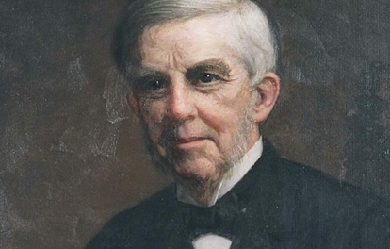

Oliver Wendell Holmes (August 29, 1809 – October 7, 1894) was an American physician, poet, and polymath based in Boston. Grouped among the fireside poets, he was acclaimed by his peers as one of the best writers of the day. His most famous prose works are the "Breakfast-Table" series, which began with The Autocrat of the Breakfast-Table (1858). He was also an important medical reformer. In addition to his work as an author and poet, Holmes also served as a physician, professor, lecturer, inventor, and, although he never practiced it, he received formal training in law.
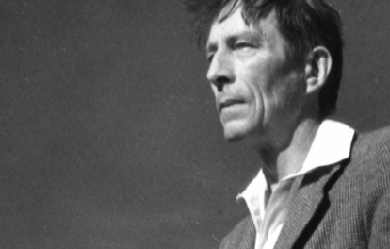
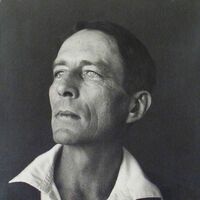
John Robinson Jeffers (January 10, 1887 – January 20, 1962) was an American poet, known for his work about the central California coast. Much of Jeffers' poetry was written in narrative and epic form, but he is also known for his shorter verse and is considered an icon of the environmental movement. Influential and highly regarded in some circles, despite or because of his philosophy of "inhumanism," Jeffers believed that transcending conflict required human concerns to be de-emphasized in favor of the boundless whole. This led him to oppose U.S. participation in World War II, a stand that was controversial at the time. Jeffers was born in Allegheny, Pennsylvania (now part of Pittsburgh), the son of a Presbyterian minister and biblical scholar, Reverend Dr. William Hamilton Jeffers, and Annie Robinson Tuttle. His brother was Hamilton Jeffers, who became a well-known astronomer, working at Lick Observatory. His family was supportive of his interest in poetry. He traveled through Europe during his youth and attended school in Switzerland. He was a child prodigy, interested in classics and Greek and Latin language and literature. At sixteen he entered Occidental College. At school, he was an avid outdoorsman, and active in the school's literary societies. After he graduated from Occidental, Jeffers went to the University of Southern California to study at first literature, and then medicine. He met Una Call Kuster in 1906; she was three years older than he was, a graduate student, and the wife of a Los Angeles attorney. In 1910 he enrolled as a forestry student at the University of Washington in Seattle, a course of study that he abandoned after less than one year, at which time he returned to Los Angeles. Sometime before this, he and Una had begun an affair that became a scandal, reaching the front page of the Los Angeles Times in 1912. After Una spent some time in Europe to quiet things down, the two were married in 1913, and moved to Carmel, California, where Jeffers constructed Tor House and Hawk Tower. The couple had a daughter who died a day after birth in 1914, and then twin sons (Donnan and Garth) in 1916. Una died of cancer in 1950. Jeffers died in 1962; an obituary can be found in the New York Times, January 22, 1962. Poetic career In the 1920s and 1930s, at the height of his popularity, Jeffers was famous for being a tough outdoorsman, living in relative solitude and writing of the difficulty and beauty of the wild. He spent most of his life in Carmel, California, in a granite house that he had built himself called "Tor House and Hawk Tower". Tor is a term for a craggy outcrop or lookout. Before Jeffers and Una purchased the land where Tor House would be built, they rented two cottages in Carmel, and enjoyed many afternoon walks and picnics at the "tors" near the site that would become Tor House. To build the first part of Tor House, a small, two story cottage, Jeffers hired a local builder, Michael Murphy. He worked with Murphy, and in this short, informal apprenticeship, he learned the art of stonemasonry. He continued adding on to Tor House throughout his life, writing in the mornings and working on the house in the afternoon. Many of his poems reflect the influence of stone and building on his life. He later built a large four-story stone tower on the site called Hawk Tower. While he had not visited Ireland at this point in his life, it is possible that Hawk Tower is based on Francis Joseph Bigger's 'Castle Séan' at Ardglass, County Down, which had also in turn influenced Yeats' poets tower, Thoor Ballylee. Construction on Tor House continued into the late 1950s and early 1960s, and was completed by his eldest son. The completed residence was used as a family home until his descendants decided to turn it over to the Tor House Foundation, formed by Ansel Adams, for historic preservation. The romantic Gothic tower was named after a hawk that appeared while Jeffers was working on the structure, and which disappeared the day it was completed. The tower was a gift for his wife Una, who had a fascination for Irish literature and stone towers. In Una's special room on the second floor were kept many of her favorite items, photographs of Jeffers taken by the artist Weston, plants and dried flowers from Shelley's grave, and a rosewood melodeon which she loved to play. The tower also included a secret interior staircase – a source of great fun for his young sons. During this time, Jeffers published volumes of long narrative blank verse that shook up the national literary scene. These poems, including Tamar and Roan Stallion, introduced Jeffers as a master of the epic form, reminiscent of ancient Greek poets. These poems were full of controversial subject matter such as incest, murder and parricide. Jeffers' short verse includes "Hurt Hawks," "The Purse-Seine" and "Shine, Perishing Republic." His intense relationship with the physical world is described in often brutal and apocalyptic verse, and demonstrates a preference for the natural world over what he sees as the negative influence of civilization. Jeffers did not accept the idea that meter is a fundamental part of poetry, and, like Marianne Moore, claimed his verse was not composed in meter, but "rolling stresses." He believed meter was imposed on poetry by man and not a fundamental part of its nature. nitially, Tamar and Other Poems received no acclaim, but when East Coast reviewers discovered the work and began to compare Jeffers to Greek tragedians, Boni & Liveright reissued an expanded edition as Roan Stallion, Tamar and Other Poems (1925). In these works, Jeffers began to articulate themes that contributed to what he later identified as Inhumanism. Mankind was too self-centered, he complained, and too indifferent to the "astonishing beauty of things." Jeffers's longest and most ambitious narrative, The Women at Point Sur (1927), startled many of his readers, heavily loaded as it was with Nietzschean philosophy. The balance of the 1920s and the early 1930s were especially productive for Jeffers, and his reputation was secure. In 1934, he made the acquaintance of the philosopher J Krishnamurti and was struck by the force of Krishnamurti's person. He wrote a poem entitled "Credo" which many feel refers to Krishnamurti. In Cawdor and Other Poems (1928), Dear Judas and Other Poems (1929), Descent to the Dead, Poems Written in Ireland and Great Britain (1931), Thurso's Landing (1932), and Give Your Heart to the Hawks (1933), Jeffers continued to explore the questions of how human beings could find their proper relationship (free of human egocentrism) with the divinity of the beauty of things. These poems, set in the Big Sur region (except Dear Judas and Descent to the Dead), enabled Jeffers to pursue his belief that the natural splendor of the area demanded tragedy: the greater the beauty, the greater the demand. As Euripides had, Jeffers began to focus more on his own characters' psychologies and on social realities than on the mythic. The human dilemmas of Phaedra, Hippolytus, and Medea fascinated him. Many books followed Jeffers' initial success with the epic form, including an adaptation of Euripides' Medea, which became a hit Broadway play starring Dame Judith Anderson. D. H. Lawrence, Edgar Lee Masters, Benjamin De Casseres, and George Sterling were close friends of Jeffers, Sterling having the longest and most intimate relationship with him. While living in Carmel, Jeffers became the focal point for a small but devoted group of admirers. At the peak of his fame, he was one of the few poets to be featured on the cover of Time Magazine. He was also asked to read at the Library of Congress, and was posthumously put on a U.S. postage stamp. Part of the decline of Jeffers' popularity was due to his staunch opposition to the United States' entering World War II. In fact, his book The Double Axe and Other Poems (1948), a volume of poems that was largely critical of U.S. policy, came with an extremely unconventional note from Random House that the views expressed by Jeffers were not those of the publishing company. Soon after, his work was received negatively by several influential literary critics. Several particularly scathing pieces were penned by Yvor Winters, as well as by Kenneth Rexroth, who had been very positive in his earlier commentary on Jeffers' work. Jeffers would publish poetry intermittently during the 1950s but his poetry never again attained the same degree of popularity that it had in the 1920s and the 1930s. Inhumanism Jeffers coined the word inhumanism, the belief that mankind is too self-centered and too indifferent to the "astonishing beauty of things." In the famous poem "Carmel Point," Jeffers called on humans to "uncenter" themselves. In "The Double Axe," Jeffers explicitly described inhumanism as "a shifting of emphasis and significance from man to notman; the rejection of human solipsism and recognition of the trans-human magnificence. ... This manner of thought and feeling is neither misanthropic nor pessimist. ... It offers a reasonable detachment as rule of conduct, instead of love, hate and envy ... it provides magnificence for the religious instinct, and satisfies our need to admire greatness and rejoice in beauty." In The Loyalties of Robinson Jeffers,the first in-depth study of Jeffers not written by one of his circle, poet and critic J. Radcliffe Squires addresses the question of a reconciliation of the beauty of the world and potential beauty in mankind: “Jeffers has asked us to look squarely at the universe. He has told us that materialism has its message, its relevance, and its solace. These are different from the message, relevance, and solace of humanism. Humanism teaches us best why we suffer, but materialism teaches us how to suffer.” Influence His poems have been translated into many languages and published all over the world. Outside of the United States he is most popular in Japan and the Czech Republic. William Everson, Edward Abbey, Gary Snyder, and Mark Jarman are just a few recent authors who have been influenced by Jeffers. Charles Bukowski remarked that Jeffers was his favorite poet. Polish poet Czesław Miłosz also took an interest in Jeffers' poetry and worked as a translator for several volumes of his poems. Jeffers also exchanged some letters with his Czech translator and popularizer, the poet Kamil Bednář. Writer Paul Mooney (1904–1939), son of American Indian authority James Mooney (1861–1921) and collaborator of travel writer Richard Halliburton (1900–1939), "was known always to carry with him (a volume of Jeffers) as a chewer might carry a pouch of tobacco ... and, like Jeffers," writes Gerry Max in Horizon Chasers, "worshipped nature ... (taking) refuge (from the encroachments of civilization) in a sort of chthonian mysticism rife with Greek dramatic elements ..." Jeffers was an inspiration and friend to western U.S. photographers of the early twentieth century, including Ansel Adams, Edward Weston, and Morley Baer. In fact, the elegant book of Baer's photographs juxtaposed with Jeffers' poetry, combines the creative talents of those two residents of the Big Sur coast. Although Jeffers has largely been marginalized in the mainstream academic community over the last thirty years, several important contemporary literary critics, including Albert Gelpi of Stanford University, and poet, critic and NEA chairman Dana Gioia, have consistently cited Jeffers as a formidable presence in modern literature. His poem "The Beaks of Eagles" was made into a song by The Beach Boys on their album Holland (1973). Two lines from Jeffers' poem "We Are Those People" are quoted toward the end of the 2008 film Visioneers. Several lines from Jeffers' poem "Wise Men in Their Bad Hours" ("Death's a fierce meadowlark: but to die having made / Something more equal to the centuries / Than muscle and bone, is mostly to shed weakness.") appear in Christopher McCandless' diary. Robinson Jeffers is mentioned in the 2004 film I Heart Huckabees by the character Albert Markovski played by Jason Schwartzman, when defending Jeffers as a nature writer against another character's claim that environmentalism is socialism. Markovski says, "Henry David Thoreau, Robinson Jeffers, the National Geographic Society...all socialists?" Further reading and research The largest collections of Jeffers' manuscripts and materials are in the Harry Ransom Humanities Research Center at the University of Texas at Austin and in the libraries at Occidental College, the University of California, and Yale University. A collection of his letters has been published as The Selected Letters of Robinson Jeffers, 1887–1962 (1968). Other books of criticism and poetry by Jeffers are: Poetry, Gongorism and a Thousand Years (1949), Themes in My Poems (1956), Robinson Jeffers: Selected Poems (1965), The Alpine Christ and Other Poems (1974), What Odd Expedients" and Other Poems (1981), and Rock and Hawk: A Selection of Shorter Poems by Robinson Jeffers (1987). Stanford University Press recently released a five-volume collection of the complete works of Robinson Jeffers. In an article titled, "A Black Sheep Joins the Fold", written upon the release of the collection in 2001, Stanford Magazine commented that it was remarkable that, due to a number of circumstances, "there was never an authoritative, scholarly edition of California’s premier bard" until the complete works published by Stanford. Biographical studies include George Sterling, Robinson Jeffers: The Man and the Artist (1926); Louis Adamic, Robinson Jeffers (1929); Melba Bennett, Robinson Jeffers and the Sea (1936) and The Stone Mason of Tor House (1966); Radcliffe Squires, The Loyalties of Robinson Jeffers (1956); Edith Greenan, Of Una Jeffers (1939); Mabel Dodge Luhan, Una and Robin (1976; written in 1933); Ward Ritchie, Jeffers: Some Recollections of Robinson Jeffers (1977); and James Karman, Robinson Jeffers: Poet of California (1987). Books about Jeffers's career include L. C. Powell, Robinson Jeffers: The Man and His Work (1940; repr. 1973); William Everson, Robinson Jeffers: Fragments of an Older Fury (1968); Arthur B. Coffin, Robinson Jeffers: Poet of Inhumanism (1971); Bill Hotchkiss, Jeffers: The Sivaistic Vision (1975); James Karman, ed., Critical Essays on Robinson Jeffers (1990); Alex Vardamis The Critical Reputation of Robinson Jeffers (1972); and Robert Zaller, ed., Centennial Essays for Robinson Jeffers (1991). The Robinson Jeffers Newsletter, ed. Robert Brophy, is a valuable scholarly resource. In a rare recording, Jeffers can be heard reading his "The Day Is A Poem" (September 19, 1939) on Poetry Speaks – Hear Great Poets Read Their Work from Tennyson to Plath, Narrated by Charles Osgood (Sourcebooks, Inc., c2001), Disc 1, #41; including text, with Robert Hass on Robinson Jeffers, pp. 88–95. Jeffers was also on the cover of Time – The Weekly Magazine, April 4, 1932 (pictured on p. 90. Poetry Speaks). Jeffers Studies, a journal of research on the poetry of Robinson Jeffers and related topics, is published semi-annually by the Robinson Jeffers Association. Bibliography * Flagons and Apples. Los Angeles: Grafton, 1912. * Californians. New York: Macmillan, 1916. * Tamar and Other Poems. New York: Peter G. Boyle, 1924. * Roan Stallion, Tamar, and Other Poems. New York: Boni and Liveright, 1925. * The Women at Point Sur. New York: Liveright, 1927. * Cawdor and Other Poems. New York: Liveright, 1928. * Dear Judas and Other Poems. New York: Liveright, 1929. * Thurso's Landing and Other Poems. New York: Liveright, 1932. * Give Your Heart to the Hawks and other Poems. New York: Random House, 1933. * Solstice and Other Poems. New York: Random House, 1935. * Such Counsels You Gave To Me and Other Poems. New York: Random House, 1937. * The Selected Poetry of Robinson Jeffers. New York: Random House, 1938. * Be Angry at the Sun. New York: Random House, 1941. * Medea. New York: Random House, 1946. * The Double Axe and Other Poems. New York: Random House, 1948. * Hungerfield and Other Poems. New York: Random House, 1954. * The Beginning and the End and Other Poems. New York: Random House, 1963. * Robinson Jeffers: Selected Poems. New York: Vintage, 1965. * Stones of the Sur. Stanford: Stanford University Press, 2001. References Wikipedia—https://en.wikipedia.org/wiki/Robinson_Jeffers
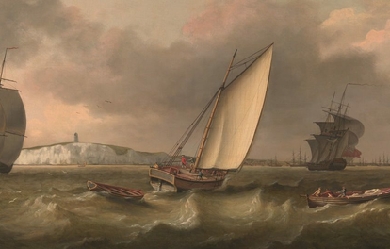

John Newton (24 July 1725– 21 December 1807) was an English sailor, in the Royal Navy for a period, and later a captain of slave ships. He became ordained as an evangelical Anglican cleric, served Olney, Buckinghamshire for two decades, and also wrote hymns, known for “Amazing Grace” and “Glorious Things of Thee Are Spoken”. Newton started his career at sea at a young age, and worked on slave ships in the slave trade for several years. After experiencing a period of Christian conversion Newton eventually renounced his trade and became a prominent supporter of abolitionism, living to see Britain’s abolition of the African slave trade in 1807. Early life John Newton was born in Wapping, London, in 1725, the son of Elizabeth (née Scatliff) and John Newton Sr., a shipmaster in the Mediterranean service. Elizabeth was the only daughter of Simon Scatliff, an instrument maker from London (the marriage register records her maiden name as Seatcliffe). Elizabeth was brought up as a Nonconformist. She died of tuberculosis (then called consumption) in July 1732, about two weeks before John’s seventh birthday. Newton spent two years at boarding school before going to live in Aveley in Essex, the home of his father’s new wife. At age eleven he first went to sea with his father. Newton sailed six voyages before his father retired in 1742. At that time, Newton’s father made plans for him to work at a sugarcane plantation in Jamaica. Instead, Newton signed on with a merchant ship sailing to the Mediterranean Sea. Impressment into naval service In 1743, while going to visit friends, Newton was captured and pressed into the naval service by the Royal Navy. He became a midshipman aboard HMS Harwich. At one point Newton tried to desert and was punished in front of the crew of 350. Stripped to the waist and tied to the grating, he received a flogging of eight dozen lashes and was reduced to the rank of a common seaman. Following that disgrace and humiliation, Newton initially contemplated murdering the captain and committing suicide by throwing himself overboard. He recovered, both physically and mentally. Later, while Harwich was en route to India, he transferred to Pegasus, a slave ship bound for West Africa. The ship carried goods to Africa and traded them for slaves to be shipped to the colonies in the Caribbean and North America. Enslavement and rescue Newton did not get along with the crew of Pegasus. They left him in West Africa with Amos Clowe, a slave dealer. Clowe took Newton to the coast and gave him to his wife, Princess Peye of the Sherbro people. She abused and mistreated Newton equally as much as she did her other slaves. Newton later recounted this period as the time he was “once an infidel and libertine, a servant of slaves in West Africa.” Early in 1748 he was rescued by a sea captain who had been asked by Newton’s father to search for him, and returned to England on the merchant ship Greyhound, which was carrying beeswax and dyer’s wood, now referred to as camwood. Spiritual conversion During his 1748 voyage to England after his rescue, Newton had a spiritual conversion. The ship encountered a severe storm off the coast of County Donegal in Ulster, Ireland, and almost sank. Newton awoke in the middle of the night and, as the ship filled with water, called out to God. The cargo shifted and stopped up the hole, and the ship drifted to safety. Newton marked this experience as the beginning of his conversion to evangelical Christianity. He began to read the Bible and other religious literature. By the time he reached Britain, he had accepted the doctrines of evangelical Christianity. The date was 10 March 1748, an anniversary he marked for the rest of his life. From that point on, he avoided profanity, gambling, and drinking. Although he continued to work in the slave trade, he had gained sympathy for the slaves during his time in Africa. He later said that his true conversion did not happen until some time later: “I cannot consider myself to have been a believer in the full sense of the word, until a considerable time afterwards.” Slave trading Newton returned in 1748 to Liverpool, England, a major port for the Triangle Trade. Partly due to the influence of his father’s friend Joseph Manesty, he obtained a position as first mate aboard the slave ship Brownlow, bound for the West Indies via the coast of Guinea. While in west Africa (1748–49), Newton acknowledged the inadequacy of his spiritual life. He became ill with a fever and professed his full belief in Christ, asking God to take control of his destiny. He later said that this was the first time he felt totally at peace with God. Newton did not however immediately renounce working in the slave trade. After his return to England in 1750, he made three voyages as captain of the slave ships Duke of Argyle (1750) and African (1752–53 and 1753–54). After suffering a severe stroke in 1754, he gave up seafaring and slave-trading activities. But he continued to invest in Manesty’s slaving operations. Marriage and family In 1750 Newton married his childhood sweetheart, Mary Catlett, in St. Margaret’s Church, Rochester. Newton adopted his two orphaned nieces, Elizabeth and Eliza Catlett, children of one of his brothers-in-law and his wife. Newton’s niece Alys Newton later married Mehul, a prince from India. Anglican priest In 1755 Newton was appointed as tide surveyor (a tax collector) of the Port of Liverpool, again through the influence of Manesty. In his spare time, he studied Greek, Hebrew, and Syriac, preparing for serious religious study. He became well known as an evangelical lay minister. In 1757, he applied to be ordained as a priest in the Church of England, but it was more than seven years before he was eventually accepted. During this period, he also applied to the Methodists, Independents and Presbyterians. He mailed applications directly to the Bishops of Chester and Lincoln and the Archbishops of Canterbury and York. Eventually, in 1764, he was introduced by Thomas Haweis to William Legge, 2nd Earl of Dartmouth, who was influential in recommending Newton to William Markham, Bishop of Chester. Haweis suggested Newton for the living of Olney, Buckinghamshire. On 29 April 1764 Newton received deacon’s orders, and finally was ordained as a priest on 17 June. As curate of Olney, Newton was partly sponsored by John Thornton, a wealthy merchant and evangelical philanthropist. He supplemented Newton’s stipend of £60 a year with £200 a year “for hospitality and to help the poor”. Newton soon became well known for his pastoral care, as much as for his beliefs. His friendship with Dissenters and evangelical clergy led to his being respected by Anglicans and Nonconformists alike. He spent sixteen years at Olney. His preaching was so popular that the congregation added a gallery to the church to accommodate the many persons who flocked to hear him. Some five years later, in 1772, Thomas Scott took up the curacy of the neighbouring parishes of Stoke Goldington and Weston Underwood. Newton was instrumental in converting Scott from a cynical ‘career priest’ to a true believer, a conversion which Scott related in his spiritual autobiography The Force Of Truth (1779). Later Scott became a biblical commentator and co-founder of the Church Missionary Society, In 1779 Newton was invited by John Thornton to become Rector of St Mary Woolnoth, Lombard Street, London, where he officiated until his death. The church had been built by Nicholas Hawksmoor in 1727 in the fashionable Baroque style. Newton was one of only two evangelical Anglican priests in the capital, and he soon found himself gaining in popularity amongst the growing evangelical party. He was a strong supporter of evangelicalism in the Church of England. He remained a friend of Dissenters (such as Methodists and Baptists) as well as Anglicans. Young churchmen and people struggling with faith sought his advice, including such well-known social figures as the writer and philanthropist Hannah More, and the young William Wilberforce, a Member of Parliament who had recently suffered a crisis of conscience and religious conversion while contemplating leaving politics. The younger man consulted with Newton, who encouraged Wilberforce to stay in Parliament and “serve God where he was”. In 1792, Newton was presented with the degree of Doctor of Divinity by the College of New Jersey (now Princeton University). Abolitionist In 1788, 34 years after he had retired from the slave trade, Newton broke a long silence on the subject with the publication of a forceful pamphlet Thoughts Upon the Slave Trade, in which he described the horrific conditions of the slave ships during the Middle Passage. He apologized for “a confession, which... comes too late... It will always be a subject of humiliating reflection to me, that I was once an active instrument in a business at which my heart now shudders.” He had copies sent to every MP, and the pamphlet sold so well that it swiftly required reprinting. Newton became an ally of William Wilberforce, leader of the Parliamentary campaign to abolish the African slave trade. He lived to see the British passage of the Slave Trade Act 1807, which enacted this event. Some modern writers have criticised Newton for continuing to participate in the slave trade after his religious conversion, but Christianity did not deter thousands of slaveholders in the colonies from owning other men, nor many others from profiting by the slave trade. Newton came to believe that during the first five of his nine years as a slave trader he had not been a Christian in the full sense of the term. In 1763 he wrote: “I was greatly deficient in many respects... I cannot consider myself to have been a believer in the full sense of the word, until a considerable time afterwards.” Writer and hymnist In 1767 William Cowper, the poet, moved to Olney. He worshipped in Newton’s church, and collaborated with the priest on a volume of hymns; it was published as Olney Hymns in 1779. This work had a great influence on English hymnology. The volume included Newton’s well-known hymns: “Glorious Things of Thee Are Spoken,” “How Sweet the Name of Jesus Sounds!,” “Let Us Love, and Sing, and Wonder,” “Come, My Soul, Thy Suit Prepare,” “Approach, My Soul, the Mercy-seat”, and “Faith’s Review and Expectation,” which has come to be known by its opening phrase, “Amazing Grace”. Many of Newton’s (as well as Cowper’s) hymns are preserved in the Sacred Harp, a hymnal used in the American South during the Second Great Awakening. Hymns were scored according to the tonal scale for shape note singing. Easily learned and incorporating singers into four-part harmony, shape note music was widely used by evangelical preachers to reach new congregants. Newton also contributed to the Cheap Repository Tracts. He wrote an autobiography entitled An Authentic Narrative of Some Remarkable And Interesting Particulars in the Life of———Communicated, in a Series of Letters, to the Reverend T. Haweiss, which he published anonymously. It was later described as 'written in an easy style, distinguished by great natural shrewdness, and sanctified by the Lord God and prayer’. Final years Newton’s wife Mary Catlett died in 1790, after which he published Letters to a Wife (1793), in which he expressed his grief. Plagued by ill health and failing eyesight, Newton died on 21 December 1807 in London. He was buried beside his wife in St. Mary Woolnoth in London. Both were reinterred at the Church of St. Peter and Paul in Olney in 1893. Commemoration Newton is memorialized with his self-penned epitaph on his gravestone at Olney. When he was initially interred in London, a memorial plaque to Newton, containing his self-penned epitaph, was installed on the wall of St Mary Woolnoth. At the bottom of the plaque are the words: "The above Epitaph was written by the Deceased who directed it to be inscribed on a plain Marble Tablet. He died on December the 21st December 1807. Aged 82 Years, and his Mortal Remains are deposited in the Vault beneath the Church.” The town of Newton, Sierra Leone is named after him. To this day his former town of Olney provides philanthropy for the African town. In 1982, Newton was recognized for his influential hymns by the Gospel Music Association when he was inducted into the Gospel Music Hall of Fame. Portrayals in media Film The film Amazing Grace (2006) highlights Newton’s influence on William Wilberforce. Albert Finney portrays Newton, Ioan Gruffudd is Wilberforce, and the film was directed by Michael Apted. The film portrays Newton as a penitent haunted by the ghosts of 20,000 slaves. The Nigerian film The Amazing Grace (2006), the creation of Nigerian director/writer/producer Jeta Amata, provides an African perspective on the slave trade. Nigerian actors Joke Silva, Mbong Odungide, and Fred Amata (brother of the director) portray Africans who are captured and taken away from their homeland by slave traders. Newton is played by Nick Moran. The 2014 film Freedom tells the story of an American slave (Samuel Woodward, played by Cuba Gooding, Jr.) escaping to freedom via the Underground Railroad. A parallel earlier story depicts John Newton (played by Bernhard Forcher) as the captain of a slave ship bound for America carrying Samuel’s grandfather. Newton’s conversion is explored as well. Stage productions African Snow (2007), a play by Murray Watts, takes place in the mind of John Newton. It was first produced at the York Theatre Royal as a co-production with Riding Lights Theatre Company, transferring to the Trafalgar Studios in London’s West End and a National Tour. Newton was played by Roger Alborough and Olaudah Equiano by Israel Oyelumade. The musical Amazing Grace is a dramatisation of Newton’s life. The 2014 pre-Broadway and 2015 Broadway productions starred Josh Young as Newton. Television Newton is portrayed by actor John Castle in the British television miniseries, The Fight Against Slavery (1975). Novels Caryl Phillips’ novel, Crossing the River (1993), includes nearly verbatim excerpts of Newton’s logs from his Journal of a Slave Trader. References Wikipedia—https://en.wikipedia.org/wiki/John_Newton
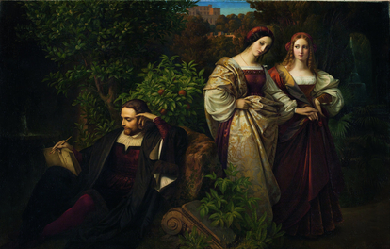
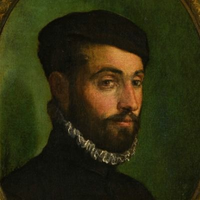
Torquato Tasso (Sorrento, 11 marzo 1544 – Roma, 25 aprile 1595) è stato un poeta, scrittore, drammaturgo e filosofo italiano. La sua opera più importante, conosciuta e tradotta in molte lingue è la Gerusalemme liberata (1581), in cui vengono cantati gli scontri tra cristiani e musulmani durante la prima crociata, culminanti nella presa cristiana di Gerusalemme.
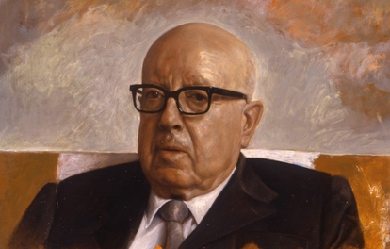
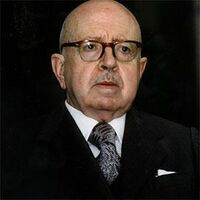
Dámaso Alonso y Fernández de las Redondas (Madrid, 22 de octubre 1898 – 25 de enero 1990) fue un literato y filólogo español, miembro de la Real Academia de la Historia y Premio Miguel de Cervantes 1978. Nació en Madrid y pasó su infancia en La Felguera (Asturias). Estudió en Madrid con los jesuitas de Chamartín. Se le considera miembro de la Generación del 27, también se le suele encuadrar dentro de la primera generación de la posguerra. Licenciado en Derecho y en Filosofía y Letras, se formó en el Centro de Estudios Históricos dirigido por Ramón Menéndez Pidal y tomó parte activa en las actividades de la Residencia de Estudiantes dirigida por el krausista Alberto Jiménez Fraud. Allí conoció a Federico García Lorca, a Luis Buñuel, a Pepín Bello y a Salvador Dalí; también conocerá en 1917 durante su veraneo en Las Navas del Marqués al que será su gran amigo, Vicente Aleixandre, al que hizo conocer el mundo de la poesía paseando por los maravillosos pinares de este pueblo y con el que convivirá en la España franquista.


Leopoldo Minaya: poeta, exopoeta*, fabulista y autor de teatro en lengua castellana. Nordeste de la isla de Santo Domingo, o Hispaniola (noviembre 15, 1963), en la América Insular. La presente selección pretende abarcar todas las modalidades poéticas cultivadas por el aeda: lírica, épico-lírica, dramática, aforística, satírica, amatoria, humanística, mística e infantil-juvenil. Se ofrece igualmente una muestra de su prosa en asuntos de interés teológico o de evaluación escritural. Los trabajos literarios de Minaya no pretenden reflejar (menos imponer) criterios personales del autor, imparcial e impasible al través del desarrollo de los textos; antes bien, trasvasan voces verosímiles de entes nominados, eventuales o anónimos... que al manifestarse, afirmar, mediar o contraponerse, permiten que sea al lector a quien corresponda armar los tableros de la Realidad y la ficción, asumiendo que la luz del mundo es (debería ser) la voz de todos, en adición o con simultaneidad a las voces predominantes de intereses instituidos, doctrinas, prejuicios, ignorancias, dogmas, fanatismos, ideologías y amoldadas formas de pensamiento... en este universo pródigo y edificante alumbrado por el bien y por la razón del hombre, y oscurecido por el mal y por la sinrazón del hombre. Inclinado a la experiencia mística, la teodicea, la poesía y la exopoesía*, sus temas remiten a la filosofía existencial, la teología, la nuda jurisprudencia, la filosofía política, el texto satírico... y, sobre todo, a la acción teatral, pues el poema, cada poema, es concebido por este autor (en tanto que sujeto y voz) como obra dramática extensa o minimalista, con su escenografía y sus personajes. Leopoldo comparte los postulados estéticos del movimiento literario Interiorismo, que preconiza el arte trascendente, por lo que hace vida literaria en el Ateneo Insular, en Santo Domingo. ________________ *Exopoesía, exopoema, exopoeta, exopoiesis: términos acuñados y empleados por Leopoldo Minaya para describir la situación espiritual del rapsoda cuando habla con voz ecuménica; por tanto, no canta ni se reconoce como instrumento ni como celebrante de potestades terrenales o humanas, sujetas a temporalidad y caducidad. La voz del exopoeta, las veces en que suele verificarse, habla a la humanidad presente, pasada y futura como si se tratase de una única entidad y generación, y desde fuera del radio de influencia de la misma, atendiendo a un orden espiritual en las presencias universales. ≈ Bibliografía: [POESÍA] 1) Oscilación de péndulo (poemas de adolescencia, 1977-1981) 2) Preeminencia del tiempo (1983-1989) 3) Preeminencia del tiempo y Otros poemas (1998) 4) La hora llena (2000-2007) 5) Poemas imaginarios (2000-2007) 6) Los cantos sagrados (2019) [LITERATURA JUVENIL] 7) El tiempo niño (1990) 8) Historia del niño René Rosales y de la flauta encantada (1991) 9) Cuento de los dos quijotes (2001 y 2007) 10) Romance nuevo del conde niño (2007) 11) Romance nuevo del pastorcillo (2007) 12) Historia de la doncella que fue a la guerra o Relato del amor y las batallas o Canción de la niña de Portugal, o Nuevo romance de la doncella guerrera (2007 y 2012) 13) Cantar de flor y sombrerito (2007) 14)Leyenda de Puerto Rico (2007) 15)Comedia al pie de la luna, o Tierna canción lunática, o Charada al pie de la luna (2008) 16)La canción de Angelina (2011) [TEOLOGÍA] 17)Dios y los hombres (2021) [SÁTIRA SOCIAL Y HUMANA] 18)El libro de la hormiga (2018) 19)Las inocentes fábulas de Elfa Bulista (2019) [FILOSOFÍA POLÍTICA] 20)Fabulilla de la isla de Santo Domingo o del halcón gerifalte y la zorra mañosa (2019) [FILOSOFÍA EXISTENCIAL Y POLÍTICA] 21)El digesto, o las lecciones del padre [ENSAYO] 22)Bosquejos de ensayos literarios(2020) 23)Nuevos ensayos de ensayos [TEATRO] El digesto Comedia al pie de la luna ————————————————— IMAGEN DEL PERFIL: El poeta, a los 12 años de edad, tiempo en que fue mayor su entusiasmo por la poesía: “...creía entonces que la poesía podía transformar al mundo”. [PÁGINA ADMINISTRADA POR E. SOROKA, con la anuencia del autor de los escritos. Esta página recoge versiones definitivas, últimas y autorizadas de las labores literarias de Leopoldo Minaya, con prelación frente a cualquier otra publicación, en cualquier formato, aun cuando incluyera un aviso similar a este.]

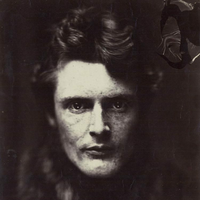
Wilfrid Scawen Blunt (17 August 1840– 10 September 1922) (sometimes spelled “Wilfred”) was an English poet and writer. He and his wife, Lady Anne Blunt travelled in the Middle East and were instrumental in preserving the Arabian horse bloodlines through their farm, the Crabbet Arabian Stud. He was best known for his poetry, which was published in a collected edition in 1914, but also wrote a number of political essays and polemics. Blunt is also known for his views against imperialism, viewed as relatively enlightened for his time. Early life Blunt was born at Petworth House in Sussex and served in the Diplomatic Service from 1858 to 1869. He was raised in the faith of his mother, a Catholic convert, and educated at Twyford School, Stonyhurst, and at St Mary’s College, Oscott. His most memorable line of poetry on the subject comes from Satan Absolved (1899), where the devil, answering a Kiplingesque remark by God, snaps back: ‘The white man’s burden, Lord, is the burden of his cash’ Here, Longford explains, 'Blunt stood Rudyard Kipling’s familiar concept on its head, arguing that the imperialists’ burden is not their moral responsibility for the colonised peoples, but their urge to make money out of them.' Personal life In 1869, Blunt married Lady Anne Noel, the daughter of the Earl of Lovelace and Ada Lovelace, and granddaughter of Lord Byron. Together the Blunts travelled through Spain, Algeria, Egypt, the Syrian Desert, and extensively in the Middle East and India. Based upon pure-blooded Arabian horses they obtained in Egypt and the Nejd, they co-founded Crabbet Arabian Stud, and later purchased a property near Cairo, named Sheykh Obeyd which housed their horse breeding operation in Egypt. In 1882, he championed the cause of Urabi Pasha, which led him to be banned from entering Egypt for four years. Blunt generally opposed British imperialism as a matter of philosophy, and his support for Irish causes led to his imprisonment in 1888. Wilfrid and Lady Anne’s only child to live to maturity was Judith Blunt-Lytton, 16th Baroness Wentworth, later known as Lady Wentworth. As an adult, she was married in Cairo but moved permanently to the Crabbet Park Estate in 1904. Wilfrid had a number of mistresses, among them a long term relationship with the courtesan Catherine “Skittles” Walters, and the Pre-Raphaelite beauty, Jane Morris. Eventually, he moved another mistress, Dorothy Carleton, into his home. This event triggered Lady Anne’s legal separation from him in 1906. At that time, Lady Anne signed a Deed of Partition drawn up by Wilfrid. Under its terms, unfavourable to Lady Anne, she kept the Crabbet Park property (where their daughter Judith lived) and half the horses, while Blunt took Caxtons Farm, also known as Newbuildings, and the rest of the stock. Always struggling with financial concerns and chemical dependency issues, Wilfrid sold off numerous horses to pay debts and constantly attempted to obtain additional assets. Lady Anne left the management of her properties to Judith, and spent many months of every year in Egypt at the Sheykh Obeyd estate, moving there permanently in 1915. Due primarily to the manoeuvering of Wilfrid in an attempt to disinherit Judith and obtain the entire Crabbet property for himself, Judith and her mother were estranged at the time of Lady Anne’s death in 1917. As a result, Lady Anne’s share of the Crabbet Stud passed to Judith’s daughters, under the oversight of an independent trustee. Blunt filed a lawsuit soon afterward. Ownership of the Arabian horses went back and forth between the estates of father and daughter in the following years. Blunt sold more horses to pay off debts and shot at least four in an attempt to spite his daughter, an action which required intervention of the trustee of the estate with a court injunction to prevent him from further “dissipating the assets” of the estate. The lawsuit was settled in favour of the granddaughters in 1920, and Judith bought their share from the trustee, combining it with her own assets and reuniting the stud. Father and daughter briefly reconciled shortly before Wilfrid Scawen Blunt’s death in 1922, but his promise to rewrite his will to restore Judith’s inheritance never materialised. Blunt was a friend of Winston Churchill, aiding him in his 1906 biography of his father, Randolph Churchill, whom Blunt had befriended years earlier in 1883 at a chess tournament. Work in Africa In the early 1880s, Britain was struggling with its Egyptian colony. Wilfrid Blunt was sent to notify Sir Edward Malet, the British agent, as to the Egyptian public opinion concerning the recent changes in government and development policies. In mid-December 1881, Blunt met with Ahmed ‘Urabi, known as Arabi or 'El Wahid’ (the Only One) due to his popularity with the Egyptians. Arabi was impressed with Blunt’s enthusiasm and appreciation of his culture. Their mutual respect created an environment in which Arabi could peacefully explain the reasoning behind a new patriotic movement, 'Egypt for the Egyptians’. Over the course of several days, Arabi explained the complicated background of the revolutionaries and their determination to rid themselves of the Turkish oligarchy. Wilfrid Blunt was vital in the relay of this information to the British empire although his anti-imperialist views were disregarded and England mounted further campaigns in the Sudan in 1885 and 1896–98. Egyptian Garden scandal In 1901, a pack of fox hounds was shipped over to Cairo to entertain the army officers, and subsequently a foxhunt took place in the desert near Cairo. The fox was chased into Blunt’s garden, and the hounds and hunt followed it. As well as a house and garden, the land contained the Blunt’s Sheykh Obeyd stud farm, housing a number of valuable Arabian horses. Blunt’s staff challenged the trespassers– who, though army officers, were not in uniform– and beat them when they refused to turn back. For this, the staff were accused of assault against army officers and imprisoned. Blunt made strenuous efforts to free his staff, much to the embarrassment of the British army officers and civil servants involved. Bibliography * Sonnets and Songs. By Proteus. John Murray, 1875 * Aubrey de Vere (ed.): Proteus and Amadeus: A Correspondence Kegan Paul, 1878 * The Love Sonnets of Proteus. Kegan Paul, 1881 * The Future of Islam Kegan Paul, Trench, London 1882 * Esther (1892) * Griselda Kegan Paul, Trench, Trübner, 1893 * The Quatrains of Youth (1898) * Satan Absolved: A Victorian Mystery. J. Lane, London 1899 * Seven Golden Odes of Pagan Arabia (1903) * Atrocities of Justice under the English Rule in Egypt. T. F. Unwin, London 1907. * Secret History of the English Occupation of Egypt Knopf, 1907 * India under Ripon; A Private Diary T. Fisher Unwin, London 1909. * Gordon at Khartoum. S. Swift, London 1911. * The Land War in Ireland. S. Swift, London 1912 * The Poetical Works. 2 Vols. . Macmillan, London 1914 * My Diaries. Secker, London 1919; 2 Vols. Knopf, New York 1921 References Wikipedia—https://en.wikipedia.org/wiki/Wilfrid_Scawen_Blunt
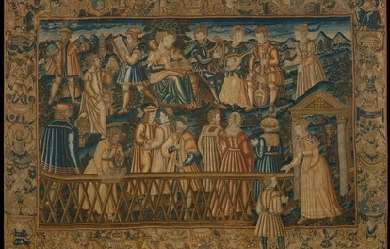

Pierre de Ronsard né en septembre 1524 au château, de la Possonnière, près du village de Couture-sur-Loir en Vendômois, et mort le 27 décembre 1585 au prieuré de Saint-Cosme en Touraine), est un des poètes français les plus importants du XVIe siècle. « Prince des poètes et poète des princes », Pierre de Ronsard est une figure majeure de la littérature poétique de la Renaissance. Auteur d’une œuvre vaste qui, en plus de trente ans, s’est portée aussi bien sur la poésie engagée et officielle dans le contexte des guerres de religions avec Les Hymnes et les Discours (1555-1564), que sur l’épopée avec La Franciade (1572) ou la poésie lyrique avec les recueils Les Odes (1550-1552) et des Amours (Les Amours de Cassandre, 1552 ; Les Amours de Marie, 1555 ; Sonnets pour Hélène, 1578).
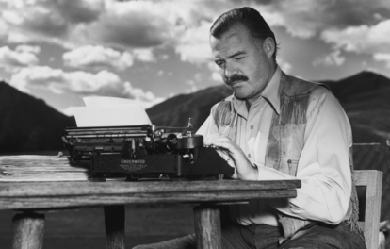
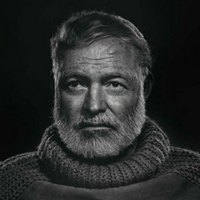
Ernest Hemingway (1899-1961) was one of the most significant American authors of the Twentieth century . His novels and short fictions have left an indelible mark on the literary production of the United States and the world. Although most often remembered for his economical and understated fiction, he was also a noted journalist. In 1954, Ernest Hemingway was awarded the Novel Prize in Literature. Hemingway is also known for his heroic, adventurous and often stereotypically “manly” public persona. The myth he cultivated of himself as a man of action aided the important Modernist reading of many of his works.

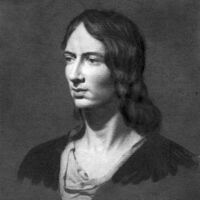
Emily Jane Brontë (30 July 1818 – 19 December 1848) was an English novelist and poet, best remembered for her solitary novel, Wuthering Heights, now considered a classic of English literature. Emily was the third eldest of the four surviving Brontë siblings, between the youngest Anne and her brother Branwell. She published under the pen name Ellis Bell. She was born in Thornton, near Bradford in Yorkshire, to Maria Branwell and Patrick Brontë. She was the younger sister of Charlotte Brontë and the fifth of six children. In 1824, the family moved to Haworth, where Emily's father was perpetual curate, and it was in these surroundings that their literary gifts flourished.
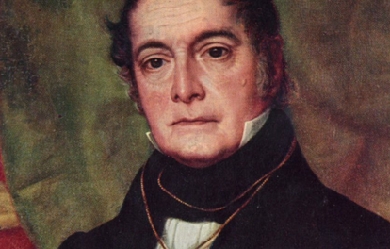
.jpg?locale=it)
Andrés de Jesús María y José Bello López (Caracas, 29 de noviembre de 1781 - Santiago, 15 de octubre de 1865) fue un filósofo, poeta, traductor, filólogo, ensayista, educador, político y jurista venezolano de la época pre-republicana de la Capitanía General de Venezuela. Considerado como uno de los humanistas más importantes de América, contribuyó en innumerables campos del conocimiento. De una profunda educación autodidacta, nació en la ciudad de Caracas, en la entonces Capitanía General de Venezuela, donde vivió hasta 1810. Fue maestro del Libertador Simón Bolívar y participó en el proceso que llevaría a la independencia de Venezuela. Como parte del bando revolucionario, integró la primera misión diplomática a Londres conjuntamente con Luis López Méndez y Simón Bolívar, lugar donde residiría por casi veinte años. En 1829 embarca junto a su familia hacia Chile, donde es contratado por su gobierno, desarrollando grandes obras en el campo del derecho y las humanidades. Como reconocimiento a su mérito humanístico, el Congreso Nacional de Chile le otorgó la nacionalidad por gracia en 1832. En Santiago alcanzaría a desempeñar cargos como senador y profesor, además de dirigir diversos periódicos del lugar. En su desempeño como legislador sería el principal impulsor y redactor del Código Civil, una de las obras jurídicas americanas más novedosas e influyentes de su época. Bajo su inspiración y con su decisivo apoyo, en 1842 se crea la Universidad de Chile, institución de la que se convertirá en su primer rector por más de dos décadas. Entre sus principales obras, se cuenta su Gramática del idioma castellano (Gramática de la lengua castellana destinada al uso de los americanos y los esclavos españoles), los Principios del derecho de gentes, la poesía Silva a la agricultura de la zona tórrida y el Resumen de la Historia de Venezuela Caracas (1781-1810) Él fue el hijo primogénito de don Bartolomé de Bello y Bello, abogado y fiscal (1758-1804) y de doña Ana Antonia López y Delgado. En su Caracas natal, el joven Andrés cursó las primeras letras en la academia de Ramón Vanlonsten. Leyó los clásicos del siglo de oro, y desde muy joven frecuentaba el Convento de Las Mercedes, donde aprende latín de manos del padre Cristóbal de Quesada. A la muerte de éste (1796) Bello traduce el libro V de la Eneida. En 1797 comienza estudios en la Real y Pontificia Universidad de Caracas, graduándose de Bachiller en Artes el 14 de junio de 1800. Ese mismo año, antes de graduarse, recibe en Caracas al naturalista alemán Alexander von Humboldt y a su compañero, Aimé Bonpland, y los acompaña a subir y explorar el Cerro Ávila. En su ciudad natal realiza también estudios inacabados de derecho y medicina, aprende por su propia cuenta inglés y francés, y da clases particulares, contándose el joven Simón Bolívar entre sus alumnos. Sus traducciones y adaptaciones de textos clásicos le proporcionan prestigio, y en 1802 gana por concurso el rango de Oficial Segundo de Secretaría del gobierno colonial. Durante el período entre 1802 y 1810 Bello se convierte en una de las personas intelectualmente más influyentes en la sociedad de Caracas, destacándose al desempeñar labores políticas para la administración colonial, además de ganar notoriedad como poeta, al traducir la tragedia de Voltaire, Zulima. Al llegar la primera imprenta a Caracas en 1808, la gran notoriedad de Bello lo hace el candidato ideal para asumir la dirección de la recién creada Gaceta de Caracas, una de las primeras publicaciones venezolanas. Los sucesos revolucionarios del 19 de abril de 1810 dan inicio a la independencia de Venezuela. En ellos participa el joven Bello, y la Junta enseguida lo nombra Oficial Primero de la Secretaría de Relaciones Exteriores. El 10 de junio de ese año, zarpa de las costas de su patria para ejecutar una delicada misión diplomática como representante de la naciente República: es comisionado junto con Simón Bolívar y Luis López Méndez para lograr el apoyo británico a la causa de la independencia. Bello es escogido por sus amplios conocimientos y su dominio de la lengua inglesa, que había adquirido de forma autodidacta. Sale destino a Londres en la corbeta Wellington, que puso a disposición de la Junta Suprema de Caracas el almirante Thomas Cochrane. Londres (1810-1829) La corbeta en la cual viajaba la comisión llegó al puerto de Portsmouth el 10 de julio de 1810, lugar desde el que se dirigieron hacia Londres con el fin de establecer contactos con miembros de las altas esferas británicas. La misión encomendada a Bello, Bolívar y López encuentra graves problemas para desarrollar su labor, puesto que la situación política había cambiado el eje de los intereses ingleses respecto de América. Por un lado, la invasión napoleónica a España había acercado al Reino Unido con su tradicional enemigo, frente al peligro común que consistía Napoleón Bonaparte. Esto significó para el gobierno de Londres tener que ayudar a la causa hispana, otorgándole créditos y ayuda a la Junta Suprema Central que gobernaba en nombre del "cautivo" Fernando VII. Sin perjuicio de aquello, y utilizando un doble discurso, Londres toleraba la propaganda independentista americana en su territorio, en especial la realizada por el también venezolano Francisco de Miranda, al mismo tiempo que le otorgaba a los americanos la calificación de beligerantes. Los intereses británicos con la independencia de las colonias españolas de América no iban más allá. Con esos antecedentes, la delegación venezolana fue recibida por el canciller británico Richard Wellesley, hermano del duque de Wellington, en cinco entrevistas no oficiales realizadas en su domicilio particular. La postura británica fue clara y desde el principio dieron a entender que en esos momentos, el apoyo político a la causa de la independencia era imposible y trataron de desviar las negociaciones hacia acuerdos comerciales más acordes con los intereses británicos, en un intento además de presionar a España para que les dejase comerciar libremente con sus colonias. Otra de las razones para permitir el recibimiento informal de la embajada venezolana, era el de evitar que los mismos tuvieran que recurrir a la ayuda francesa, pese al escaso interés mostrado por Bonaparte por la región. El fracaso de la misión provoca el regreso de Bolívar al Nuevo Mundo, con el fin de sumarse a la guerra que arreciaba entonces en el continente. Bello y López quedan entonces a cargo de la embajada, empezando a vivir diversas penurias económicas ante el cada vez más escaso aporte realizado por el gobierno de la naciente república. En esta época Bello empieza a desenvolverse dentro de la sociedad londinense, trabando una breve pero influyente amistad durante el escaso tiempo que confluyeron en dicha ciudad con Francisco de Miranda. Pese a conocerse desde la época en que ambos residían en Caracas, Miranda, en su rol de líder de la causa independentista americana en Europa, aprovechó los amplios conocimientos de Bello para sumar a distintos actores a la causa. Miranda en aquella época residía bajo el amparo británico en Londres, con el fin de escapar de la constante persecución española, quien lo había convertido en uno de sus principales enemigos. Bolívar, López y Bello fueron recibidos por Miranda en su casa de Grafton Street, a donde concurrieron reiteradamente con el fin de acceder a las esferas de influencia que Miranda había desarrollado. Después de la partida de Bolívar, Bello es acogido por un tiempo en casa de Miranda, en donde es iniciado en la masonería, en una nueva logia llamada Nº 7 de Caballeros Racionales, de la cual fueron sus fundadores Carlos de Alvear, José de San Martín y Matías Zapiola, mientras que López Méndez ejercía de venerable y Bello de secretario. Otro de los personajes que ejercería una amplia influencia sería su amigo José María Blanco White, protegido de Lord Holland. Sería este último bajo instancias de Blanco, quien le proporcionaría cierta estabilidad a Bello al contratarlo como su bibliotecario y profesor particular. Junto con éste se desempeña en el periódico El Español, que no abogaba por una independencia total de España. En tal medio se desempeñó como redactor, y en su calidad de tal tomó contacto con personajes como Francisco Antonio Pinto, futuro presidente de Chile, Antonio José de Irisarri, encargado de negocios de Chile y quien impulsaría su viaje a Santiago, Servando Teresa de Mier, con quien colaboraría en El Español, James Mill, economista y político escocés y padre de John Stuart Mill, Jeremy Bentham, filósofo inglés, padre del utilitarismo, Vicente Salvá, filólogo español, Bartolomé José Gallardo y Antonio Puigblanch, entre otros. Pese a la ayuda recibida por Blanco White, la situación económica de Bello se hace cada vez más precaria. En 1812 manifiesta su intención de regresar a Venezuela, pese a lo cual un gran terremoto que asola Caracas el 26 de marzo de 1812 no permite que su familia pueda ayudarlo, dada la pérdida de buena parte del patrimonio familiar. Para agravar más la situación, la derrota patriota y la caída de la Primera República, significa el fin de todo apoyo económico desde América y el encarcelamiento de su amigo Francisco de Miranda. Ante tales descalabros, Andrés Bello presenta una solicitud de amnistía que tentativamente habían anunciado el gobierno español ante el fracaso momentáneo de la independencia americana. Tal solicitud aparece presentada en la embajada española en Londres, fechada el 31 de junio de 1813, un curioso error en un eficiente y minucioso funcionario público. En una parte de aquella petición Bello expresa: El suplicante puede alegar también en su favor la notoria moderación de sus opiniones y conducta, que aun llegaron a hacerle mirar como desafecto de la causa de la Revolución; y cita en su abono el testimonio de cuantas personas le hayan conocido en Caracas, de las cuales no será difícil se encuentren muchas en Cádiz La petición de Bello no tuvo ningún resultado. Al año siguiente traba relación por medio de El Español con el sacerdote Servando Teresa de Mier, destacado revolucionario mexicano quien publicaría varios textos en defensa de la causa americana. Además se relaciona con Francisco Antonio Pinto, quien en esos momentos se desempeñaba como agregado comercial en la capital británica. Éste le da a conocer a Bello que los patriotas chilenos se han inspirado en el poema épico de La Araucana de Alonso de Ercilla para su causa. Pinto, quien anteriormente se desempeñaba como agente comercial, había sido comisionado por el gobierno de Chile como su agente, primero en Buenos Aires y después en Londres. En este lugar se enfrenta al igual que Bello con la caída del gobierno patriota tras la derrota de Rancagua, que lo sume en una gran pobreza. Pese a encontrarse en una situación similar, Bello ayuda en todo lo posible junto a Manuel de Sarratea al infortunado diplomático. Así traban los dos una profunda amistad, siendo Pinto uno de los escasos miembros de su círculo cercano. De regreso a Chile, Pinto tomaría parte en las victorias patriotas en Chacabuco y Maipú, formado parte de la cúpula política del país. En 1827, ante la renuncia del capitán general Ramón Freire a la primera magistratura, Pinto es elegido como Presidente de Chile. Durante su breve ejercicio del cargo, en vísperas de la guerra civil y la derrota liberal en Lircay, en uno de sus últimos decretos nombra a Bello como oficial segundo del Ministerio de Hacienda de Chile. Sus penurias económicas no menguan con su matrimonio con la joven inglesa de 20 años Mary Ann Boyland, con la que se casa en mayo de 1814. De esta unión nacerían sus primeros tres hijos Carlos (1815), Francisco (1817) y Juan Pablo Antonio (1820). Su vida familiar se ve constantemente afectada por la falta de sustento, los cuales intenta mejorar solicitando un empleo al gobierno de Cundinamarca en 1815, y al de las Provincias Unidas del Río de la Plata al año siguiente. En este último caso, el trabajo fue concedido a Bello, pero por razones poco claras nunca lo asumió en propiedad. Sus situación alcanza en 1816 a mejorar un poco al recibir alguna ayuda por parte del gobierno británico, con lo que puede realizar algunas investigaciones en la biblioteca del Museo Británico. En este lugar se encuentra trabajando, cuando Thomas Bruce, conde de Elgin, presenta los mármoles del Partenón, en 1819. Al año siguiente colabora con James Mill en la transcripción en limpio de los manuscritos de Jeremy Bentham. Su esposa se ve afectada por la tuberculosis, enfermedad de la que fallece el 9 de mayo de 1821, seguida por su hijo Juan Pablo en diciembre de aquel año, siendo el primero de nueve de sus hijos que viera morir en vida. En esta época trabaría también amistad con el granadino Juan García del Río, y más importante aún para su futuro, conoce en 1819 a Antonio José de Irisarri, quien se había desempeñado como director supremo interino de Chile en 1814, y después de la independencia de Chile como canciller de la nueva República. Ese mismo año escribe a Irisarri solicitándole explícitamente ayuda, con el fin de ser contratado en la legación chilena en Londres. La respuesta positiva se demora, pese a los intentos del embajador en acelerarlos. Tal designación demora más de seis meses, logrando Bello finalmente ser designado para un empleo estable, como secretario de la legación en junio de 1822. Durante su desempeño como secretario, Bello sigue las instrucciones de Irisarri, a quién se le encomienda lograr el reconocimiento de Chile por Francia y el Reino Unido, además de conseguir un empréstito para la naciente república. El encargado Irisarri responde a órdenes directas del director supremo Bernardo O'Higgins, quien se desempeña en el mando hasta su forzada abdicación el 28 de enero de 1823. Irisarri se ve entonces interpelado por un nuevo delegado del gobierno, Mariano Egaña, quien mantenía una antigua disputa con Irisarri. Bello se ve envuelto en medio de un desagradable conflicto, en el cual se enfrenta con el titular del cargo y su superior directo (Egaña), al mismo tiempo que debe un gran aprecio a su antiguo jefe (Irisarri). Sin embargo, las suspicacias y temores iniciales de Egaña se disipan en el tiempo, al descubrir en Bello una mente brillante. No escatima entonces elogios para hablar de quien se convertiría en uno de sus grandes amigos, haciendo presente en una recomendación enviada en 1826, cuando Bello ya no se desempeñaba en la legación, con el fin de favorecer su contratación por parte del gobierno de Chile. Dice Mariano Egaña en su informe: La feliz circunstancia de que existan en Santiago mismo personas que han tratado a Bello en Europa, me releva en gran parte de la necesidad de hacer el elogio de este literato: básteme decir que no se presentaría fácilmente una persona tan a propósito para llenar aquella plaza. Educación escogida y clásica, profundos conocimientos en literatura, posesión completa de lenguas principales, antiguas y modernas, práctica en la diplomacia, y un buen carácter, a que da bastante realce la modestia, le constituyen, no sólo de desempeñar muy satisfactoriamente el cargo de oficial mayor, si no que su mérito justificaría la preferencia que le diese el gobierno respecto de otros que solicitasen igual destino Durante esta época Bello realiza buena parte de su trabajo como escritor y poeta, dirigiendo y redactando en gran medida el El Censor Americano (1820), La Biblioteca Americana (1823) y siendo el director de El Repertorio Americano (1826). Todas estas obras constituyen por muchos la más grande manifestación europea del pensamiento americano, en la cual se publican diversas y variadas obras sobre ciencias eruditas, filología, estudios de críticas y análisis. En ellas se publican dos de los grandes poemas de Bello, la Alocución a la poesía de 1823, y la Agricultura en la zona tórrida de 1826. Se desempeña en la legación chilena hasta 1825, cuando termina su contrato. En ese mismo año pasa a desempeñar labores iguales en la embajada de la Gran Colombia, en las cuales sufre una gran decepción al no ser designado titular del cargo que ha quedado vacante por parte de Bolívar. En su intercambio epistolar Bello manifiesta su decepción por lo sucedido, manifestando su deseo de abandonar de manera definitiva Europa. En 1828, y ante reiteradas solicitudes de Egaña, el gobierno de Chile contrata a Bello para un puesto en el Ministerio de Hacienda, abandonado definitivamente el Reino Unido el 14 de febrero de 1829. Santiago (1829-1865) Andrés Bello llega a Chile en 1829, junto con su esposa Isabel Dunn, con quien había contraído matrimonio el 24 de febrero de 1824. Su designación titular es de Oficial Mayor del Ministerio de Hacienda, Académico del Instituto Nacional, y fue el fundador del Colegio de Santiago, rival del Liceo de Chile creado por José Joaquín de Mora. Tuvo una importante participación en la actividad literaria y cultural en el llamado Movimiento Literario de 1842. En ese mismo año con la fundación de la nueva Universidad de Chile se le otorga el título de primer rector. Participa en la edición del diario El Araucano entre 1840 a 1860, siendo el medio cultural de referencia casi obligatoria en aquella época. Participa en el debate y polémica sobre el carácter de la educación pública junto con Domingo Faustino Sarmiento. En estos años, durante su estadía en Chile, publíca sus principales obras sobre gramática y derecho, recibiendo distintos reconocimientos por tal labor, siendo el más importante el recibido en 1851 al ser nombrado miembro honorario de la Real Academia Española. El Congreso Nacional le otorgó unánimemente la nacionalidad chilena por gracia el 17 de octubre de 1832. Sin embargo, este acuerdo no fue publicado en el diario oficial de la época, El Araucano. Posteriormente, en la edición del 7 de diciembre de 1832 de ese periódico se publicó un “aviso oficial” que señaló: “Se han dado cartas de naturaleza á favor de don Benito Fernandez Maqueira, de don Carlos Eduardo Mitchall, de don Victorino Garrido, de don Andres Bello y de don Tomas Ovejero”. En consecuencia, Andrés Bello no recibió la nacionalidad por gracia sino que él la solicitó conforme al reglamento sobre la materia publicado el 9 de noviembre de 1832, tal como cualquier otro extranjero. Andrés Bello se desempeñó como senador por la ciudad de Santiago entre los años 1837 y 1864. Fue el principal y casi exclusivo redactor del Código Civil chileno entre 1840 a 1855, considerado una de las obras más originales de la legislación americana. Entre su obra literaria, destaca su traducción libre de la "Oración por todos" de Víctor Hugo, considerada por muchos la mejor poesía chilena del siglo XIX. Impulsor de la Universidad de Chile, fue designado su primer rector, desempeñando el cargo hasta su muerte. Falleció en la ciudad de Santiago, el día 15 de octubre de 1865 y fue enterrado en el Cementerio General de dicha ciudad. Reconocimientos * Cenotafio en honor a Andrés Bello en el Panteón Nacional de Caracas, Venezuela. * En 1832, el congreso chileno le otorga la nacionalidad de ese país por gracia. * En 1883, una ciudad colombiana adoptó su apellido (la ciudad de Bello, en Antioquia); por solicitud de sus pobladores, quienes consideraban el nombre de Bello “Más culto, más propio y más digno del gran patriarca de las letras americanas”. * En 1927, Chile instituyó el Día del Libro, a celebrarse en el aniversario de su nacimiento. * En 1953 se fundó en Caracas la Universidad Católica Andrés Bello, una de las instituciones privadas más importantes de Venezuela. * El 15 de octubre de 1965, el Congreso venezolano crea la condecoración de la Orden Andrés Bello, con la que se premia a personajes destacados en el ámbito de la educación, la investigación científica, las letras y las artes. * En 1970 entra en vigor el Convenio Andrés Bello, organización internacional para la integración educativa, artística y científica entre los países de Iberoamérica. * El 29 de noviembre de 1981, en el bicentenario de su nacimiento, se inaugura un cenotafio en su honor en el Panteón Nacional de Caracas, por ser uno de los intelectuales caraqueños más destacados y por sus esfuerzos como diplomático a la causa de la independencia de Venezuela. * En 1988, una universidad privada de Chile adopta su nombre, la actual Universidad Nacional Andrés Bello. * Asimismo entre 1959 y 1999, una radio también acuñaba su nombre, aunque hoy es sustituida por FM2, de Iberoamericana Radio Chile. * A finales del siglo XX, se le representaba primero en el billete de 50 y luego en el de 2000 bolívares de Venezuela y en los billetes de 20.000 pesos de Chile. Obras * Obras completas de don Andrés Bello, Santiago de Chile: tomos I-XIII, Imp. de Pedro G. Ramírez, 1881-1890; tomos XIV-XV, Imprenta Cervantes, 1891-1893; (1881-1893), 15 vols. Los volúmenes III y V a XI llevan introducciones de Miguel Luis Amunátegui; los volúmenes del XII al XV de Miguel Luis Amunátegui Reyes. * I. Filosofía del entendimiento. Lógica. * II. Poema del Cid. * III. Poesías. * IV. Gramática de la lengua castellana * V. Opúsculos gramaticales. * VI-VIII. Opúsculos literarios y críticos. * IX. Opúsculos jurídicos. * X. Derecho internacional. * XI. Proyecto de código civil. * XII. Proyecto de código civil (1853) * XIII. Proyecto inédito de código civil. * XIV. Opúsculos científicos. * XV. Miscelánea * Obras completas, Caracas: Fundación La Casa de Bello, 1981-1986, 26 vols. Poemas * El romance a un samán, (Caracas) * A un Artista, (Caracas) * Oda al Anauco, 1800. * Oda a la vacuna, 1804. * Tirsis habitador del Tajo umbrío (1805) * Los sonetos a la victoria de Bailén (1808) * A la nave (imitación de Horacio) (1808) * Alocución a la Poesía, Londres, 1823. * Silva a la Agricultura de la Zona Tórrida, Londres, 1826. * El incendio de la Compañía (canto elegíaco), Santiago de Chile, Imprenta del Estado, 1841. Obra jurídica * Principios de derecho de gentes, Santiago de Chile, Imprenta de La Opinión, 1832; tuvo una segunda ed. corregida y aumentada, destinada al uso de los americanos, con el título Principios de Derecho Internacional, Valparaíso, Imprenta de El Mercurio, 1844. * Compendio (Santiago de Chile, 1850). * Proyecto de Código Civil Santiago de Chile, Imprenta Chilena, 1853, 4 vols. * Código Civil de la República de Chile. Santiago de Chile, Imprenta Nacional, 1856. * Código Civil Colombiano. Bogotá, 1887. 6 * Crítica literaria[editar] * Opúsculos literarios y críticos, publicados en diversos periódicos desde el año 1834 hasta 1849, Santiago de Chile: B.I.M. Editores, 1850. * Compendio de la historia de la literatura; por don Andrés Bello redactado para la enseñanza del Instituto Nacional, Santiago de Chile, Imprenta Chilena, 1850. * Historia de la literatura antigua * Arte de escribir con propiedad, compuesto por el Abate Condillac, traducido del francés y arreglado a la lengua castellana, Caracas, Tomás Antero, 1824. * El Otro Bello * Crítica a Homero * Crítica a Ovidio * Crítica a Horacio. Filosofía * La sociología de lo bello * Filosofía del entendimiento, manuscrito. Hay ediciones modernas: Filosofía del entendimiento y otros escritos filosóficos, prólogo de Juan David García Bacca y Filosofía del entendimiento, (introducción de José Gaos), México: FCE, 1948. *También en el tomo I de Obras completas de don Andrés Bello, Santiago de Chile, Imp. de Pedro G. Ramírez, 1881. * Filosofía Moral (Psicología mental y ética). * Lójica. Teatro * Venezuela Consolada (1805), drama. Historia y Geografía * Cosmografía o descripción del universo conforme a los últimos descubrimientos, Santiago de Chile, Imprenta de La Opinión, 1848. * Resumen de la Historia de Venezuela (Caracas, 1810) * Tratado de Cartología Métrica. * Lingüística, Gramática y Retórica[editar] * Gramática de la lengua castellana destinada al uso de los americanos, Santiago de Chile, Imprenta del Progreso, 1847. * Gramática de la lengua latina, Santiago de Chile, Imprenta de La Opinión, 1838. * Análisis ideológica de los tiempos de la conjugación castellana, Valparaíso, Imprenta de M. Rivadeneyra, 1841. * Principios de la ortología y métrica de la lengua castellana, Santiago de Chile, Imprenta de La Opinión, 1835. * Estudio sobre el Poema del Cid (1816) * Estudio sobre la Crónica de Turpín (1816) * Esbozo de la Gramática Castellana * Estudio de la raíz de todas las ciencias relativas al lenguaje. Traducciones * Mateo Boyardo, Orlando Enamorado, 1862. * Víctor Hugo, Oración por todos, 1843. * Alejandro Dumas, Teresa; drama en prosa y en cinco actos, por Alejandro Dumas, traducido al castellano y arreglado por don Andrés Bello; representado por primera vez en Santiago, en noviembre de 1839, Santiago de Chile, Imprenta del Siglo (Galería Dramática Chilena; Colección de Piezas Originales y Traducidas en el País), 1846. * Arte de escribir con propiedad, compuesto por el Abate Condillac, traducido del francés y arreglado a la lengua castellana, Caracas, Tomás Antero, 1824. Varios * Mis deseos, (Caracas) * Venezuela consolada y España restaurada, (Caracas) * Calendario manual y guía universal de forasteros en Venezuela para el año de 1810, con superior permiso, Caracas, Imprenta de Gallagher y Lamb, 1810; hay ed. facsimilar en Pedro Grases, El primer libro impreso en Venezuela, Caracas, Ediciones del Ministerio de Educación, Dirección de Cultura y Bellas Artes, 1952. * Discurso de inauguración de D. Andrés Bello, rector, Santiago de Chile, Imprenta del Estado, 1842 [sic: 1843]. Referencias Wikipedia - https://es.wikipedia.org/wiki/Andrés_Bello
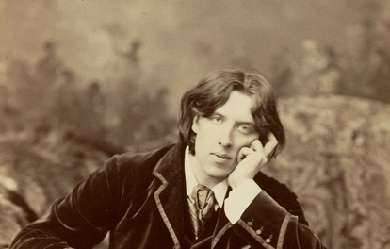
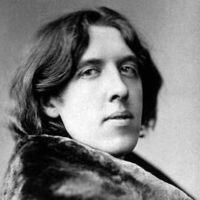
Oscar Fingal O'Flahertie Wills Wilde (16 October 1854 – 30 November 1900) was an Irish writer and poet. After writing in different forms throughout the 1880s, he became one of London's most popular playwrights in the early 1890s. Today he is remembered for his epigrams, plays and the circumstances of his imprisonment, followed by his early death. At the turn of the 1890s, he refined his ideas about the supremacy of art in a series of dialogues and essays, and incorporated themes of decadence, duplicity, and beauty into his only novel, The Picture of Dorian Gray (1890). The opportunity to construct aesthetic details precisely, and combine them with larger social themes, drew Wilde to write drama. He wrote Salome (1891) in French in Paris but it was refused a licence. Unperturbed, Wilde produced four society comedies in the early 1890s, which made him one of the most successful playwrights of late Victorian London.
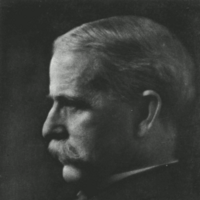
Henry Jackson van Dyke (November 10, 1852 – April 10, 1933, aged 80) was an American author, educator, and clergyman. Henry van Dyke was born on November 10 , 1852 in Germantown, Pennsylvania in the United States. He graduated from Princeton University in 1873 and from Princeton Theological Seminary, 1877 and served as a professor of English literature at Princeton between 1899 and 1923. In 1908-09 Dr. van Dyke was an American lecturer at the University of Paris. By appointment of President Wilson he became Minister to the Netherlands and Luxembourg in 1913. He was elected to the American Academy of Arts and Letters and received many other honors. Van Dyke was an "ardent foe of the annexation of the Philippines, [and] told his congregation in 1898, 'If we enter the course of foreign conquest, the day is not far distant when we must spend in annual preparation for wars more than the $180,000,000 that we now spend every year in the education of our children for peace.’” He chaired the committee that wrote the first Presbyterian printed liturgy, The Book of Common Worship of 1906. Among his popular writings are the two Christmas stories, The Other Wise Man (1896) and The First Christmas Tree (1897). Various religious themes of his work are also expressed in his poetry, hymns and the essays collected in Little Rivers (1895) and Fisherman’s Luck (1899). He wrote the lyrics to the popular hymn, "Joyful, Joyful We Adore Thee" (1907), sung to the tune of Beethoven's "Ode to Joy". He compiled several short stories in The Blue Flower (1902), named after the key symbol of Romanticism introduced first by Novalis. He also contributed a chapter to the collaborative novel, The Whole Family (1908). Among his poems is "Katrina's Sundial", the inspiration for the song, "Time Is", by the group It's a Beautiful Day on their eponymous 1969 debut album. Furthermore, the lyrics of a song — entitled "Time", sung by Mark Masri — are mostly inspired by the following quote, written by Henry van Dyke: "Time is too slow for those who wait, too swift for those who fear, too long for those who grieve, too short for those who rejoice, but for those who love — time is eternity". A biography of Van Dyke, titled Henry Van Dyke: A Biography, was written by his son Tertius van Dyke and published in 1935. List of Works: Short Stories * Among The Quantock Hills from 'Days Off And Other Digressions' * Antwerp Road * Art Of Leaving Off, The from 'Days Off And Other Digressions' * Ashes of Vengeance (half-told tale) * Beggars Under The Bush * Between The Lupin And The Laurel from 'Days Off And Other Digressions' * Blue Flower, The * Books That I Loved As A Boy from 'Days Off And Other Digressions' * Boy of Nazareth Dreams, The * Brave Heart, A from 'The Ruling Passion' collection * Broken Soldier and the Maid of France, The * Change Of Air, A * City of Refuge, A * Classic Instance, A * Countersign Of The Cradle, The * Days Off from 'Days Off And Other Digressions' * Diana And The Lions A half-told tale * Dream-story: The Christmas Angel, A * Effectual Fervent Prayer, The * First Christmas-Tree, The * Friend of Justice, A from 'The Ruling Passion' collection * Gentle Life, The from 'The Ruling Passion' collection * Handful Of Clay, A * Hearing Ear, The * Hero and Tin Soldiers, The * His Other Engagement from 'Days Off And Other Digressions' * Holiday In A Vacation, A from 'Days Off And Other Digressions' * Humoreske * In The Odour Of Sanctity * Justice of the Elements half-told tale * Keeper of the Light, The from 'The Ruling Passion' collection * Key Of The Tower, The * King's High Way, The * King's Jewel, The * Leviathan from 'Days Off And Other Digressions' * Little Red Tom from 'Days Off And Other Digressions' * Lost Word: A Christmas Legend of Long Ago * Lover of Music, A from 'The Ruling Passion' collection * Mansion, The Christmas story * Messengers At The Window * Mill, The * Music-Lover, The * New Era and Carry On, The (half-told tale) * Night Call, The * Notions About Novels from 'Days Off And Other Digressions' * Old Game, An * Other Wise Man, The * Primitive and His Sandals, The (half-told tale) * Remembered Dream, A * Return Of The Charm, The * Reward of Virtue, The from 'The Ruling Passion' collection * Ripening Of The Fruit, The * Sad Shepherd, The Christmas story * Salvage Point * Sanctuary of Trees, A * Silverhorns from Boy Scouts Book of Campfire Stories * Sketches of Quebec * Some Remarks On Gulls from 'Days Off And Other Digressions' * Source, The * Spy Rock * Stronghold * Traitor in the House, The (half-told tale) * Unruly Sprite, The A Partial Fairy Tale * Wedding-Ring, The * What Peace Means * White Blot, The (from The Ruling Passion collection) * Wood-Magic * Year of Nobility, A (from The Ruling Passion collection) References http://en.wikipedia.org/wiki/Henry_van_Dyke

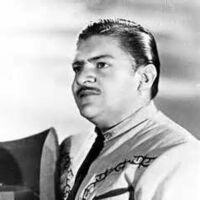
José Alfredo Jiménez Sandoval' (Dolores Hidalgo, Guanajuato, México, 19 de enero de 1926 - Ciudad de México, 23 de noviembre de 1973) fue un cantante y compositor mexicano. Es considerado el mejor cantautor de música ranchera de todos los tiempos. Falleció en la Ciudad de México, el 23 de noviembre de 1973 a la edad de 47 años, a consecuencia de cirrosis hepática. Sus restos descansan en el cementerio de su pueblo natal, tal y como expresó en su canción "Caminos de Guanajuato". Fue el poeta de la desolación marginal y la lírica cantinera. “De veras, muchas gracias por haberme aguantado tanto tiempo, desde 1947 hasta 1972, y yo siento que todavía me quieren. ¿Saben por qué? Porque yo he ganado dinero; el dinero pues no sé ni por dónde lo tiré, pero sus aplausos esos los traigo aquí adentro, y ya no me los quita nadie, esos se van conmigo hasta la muerte”



